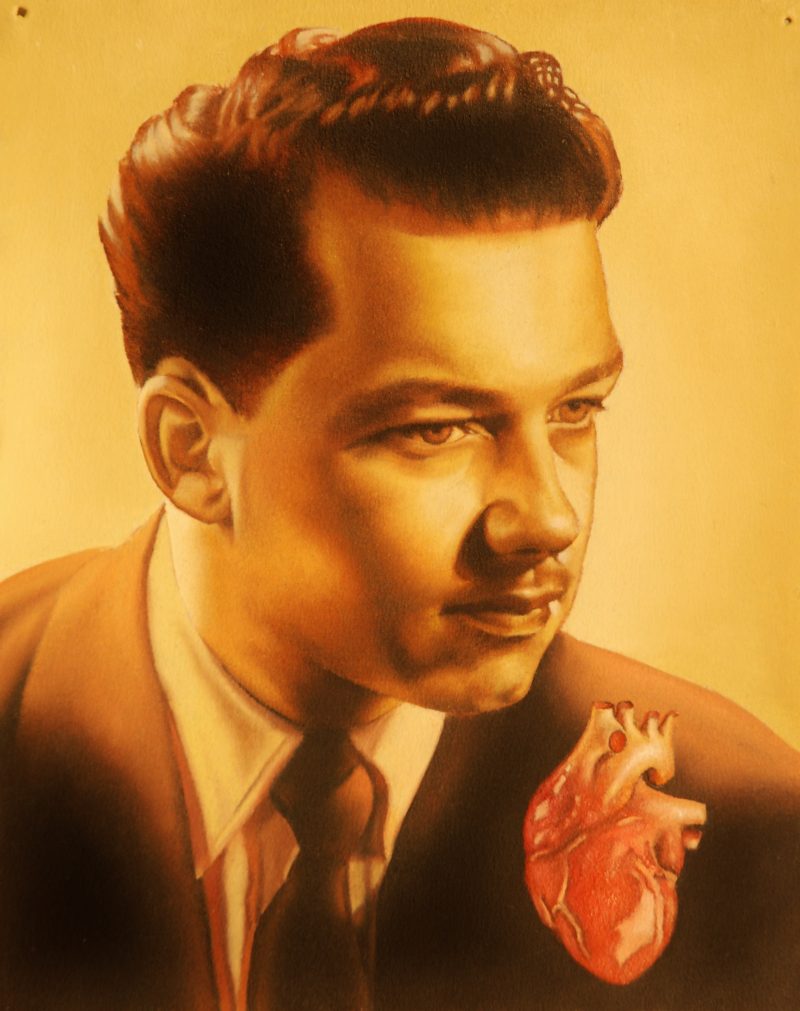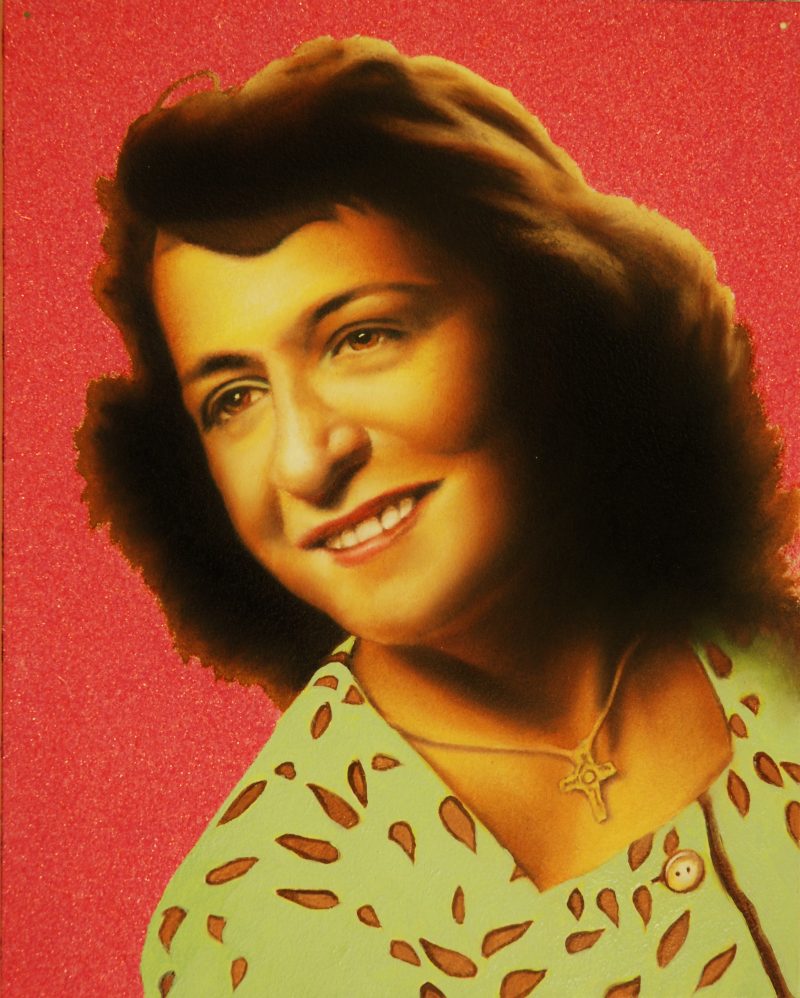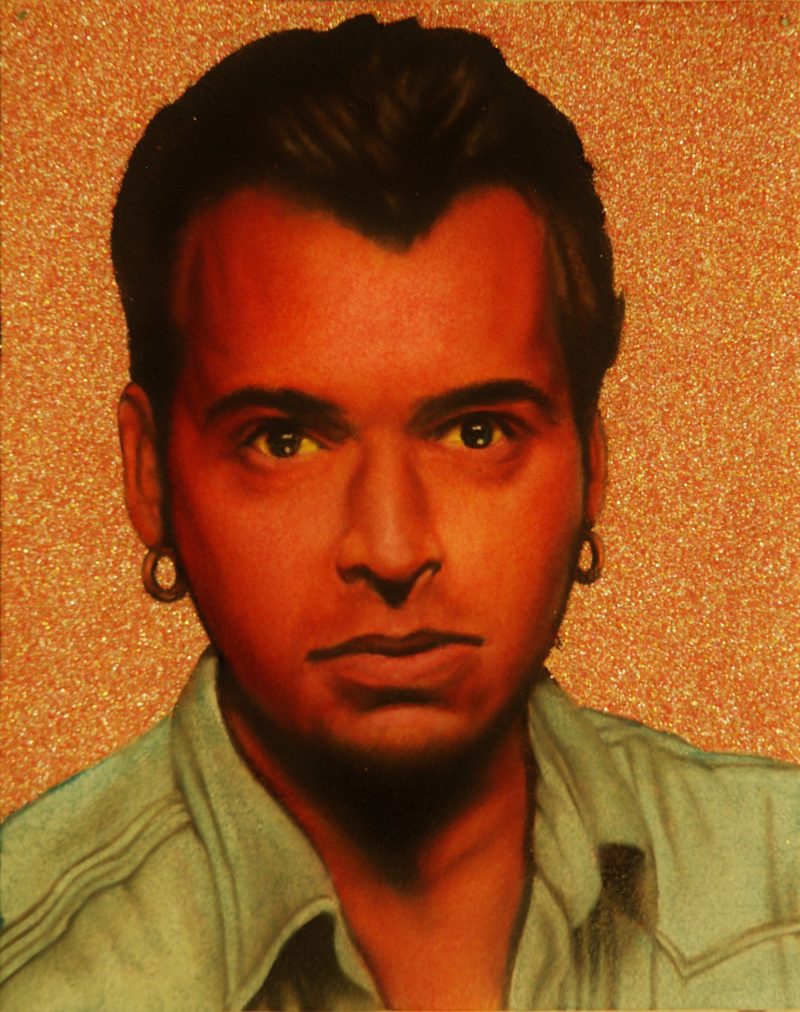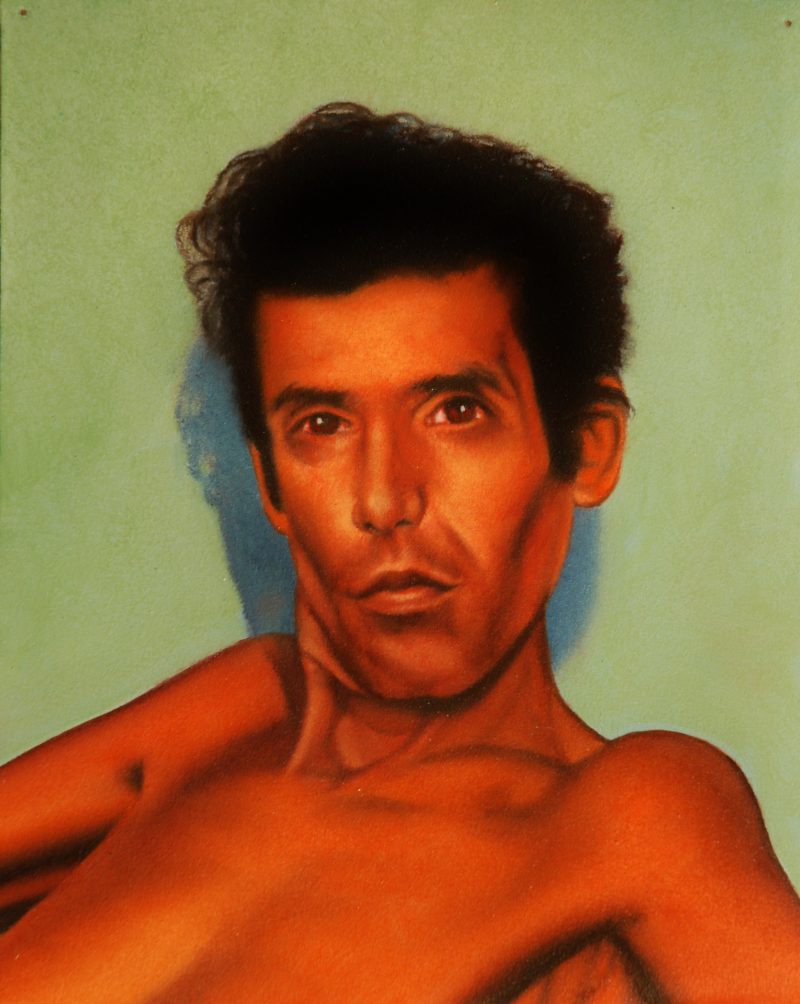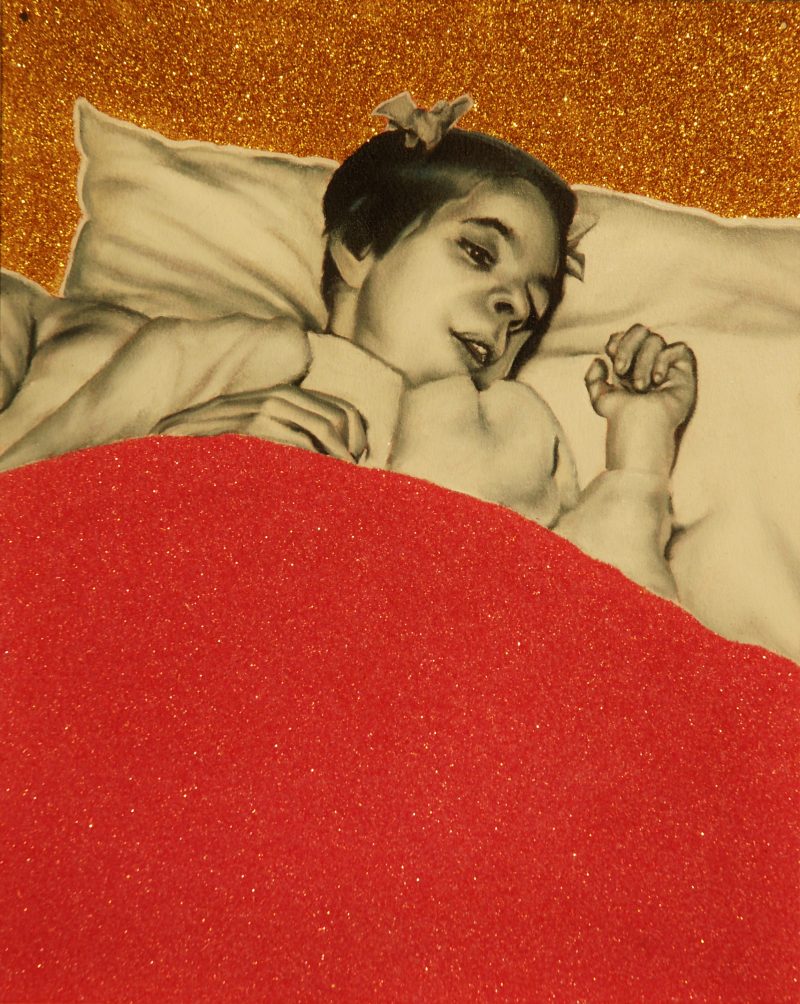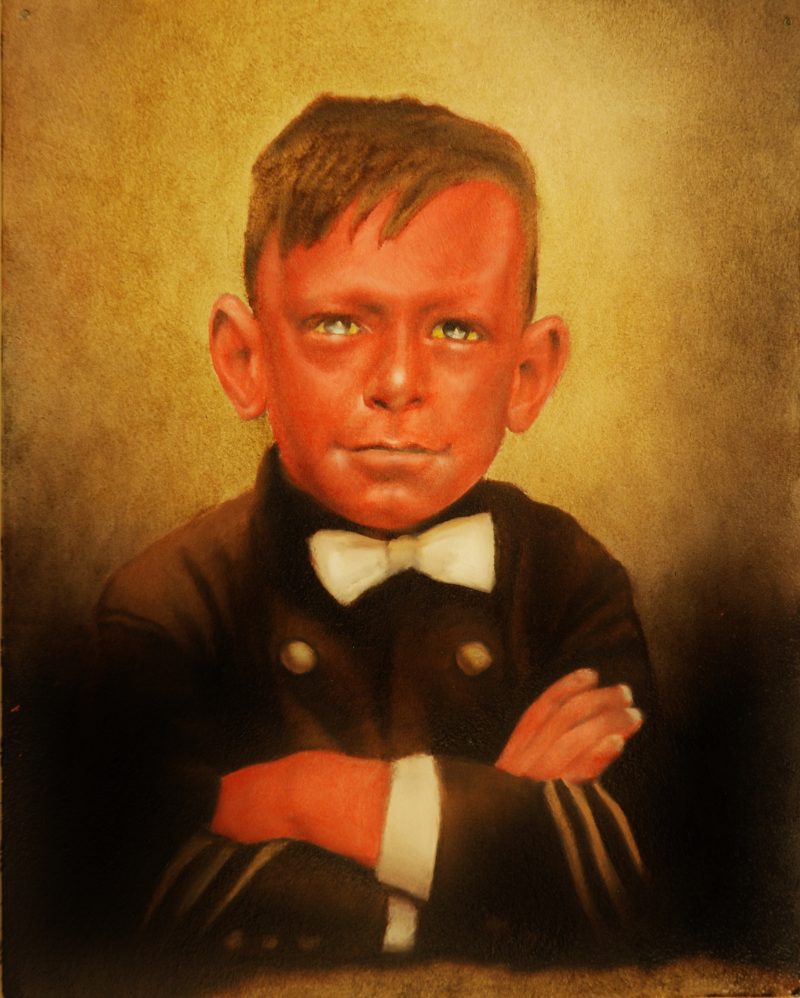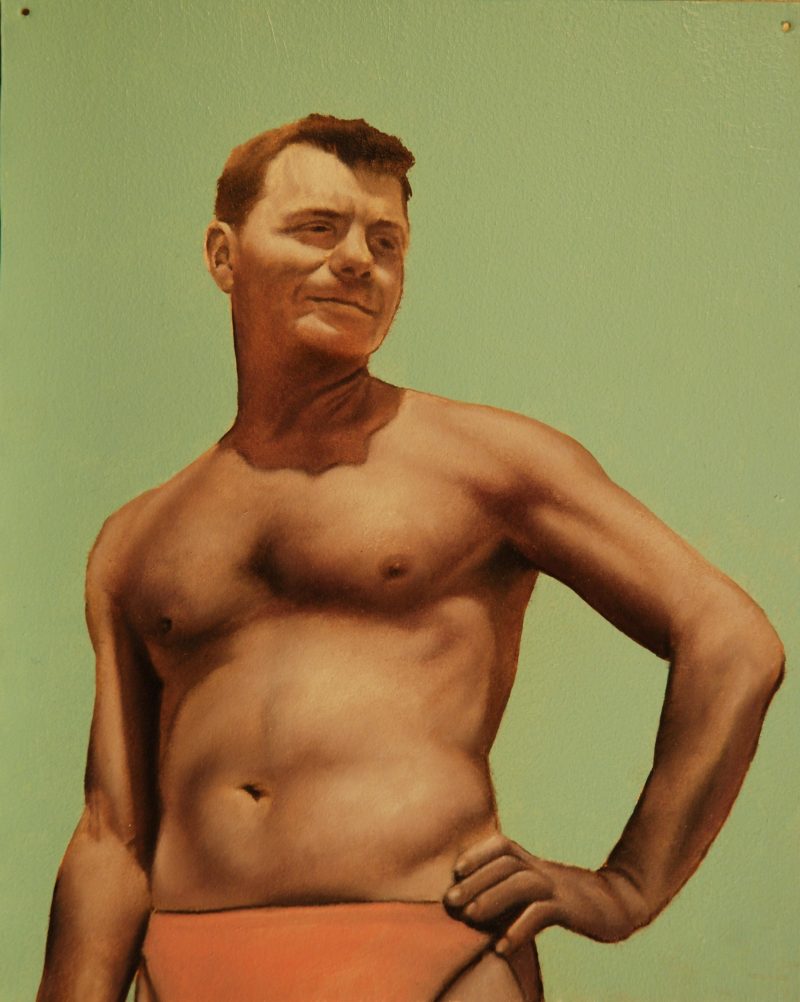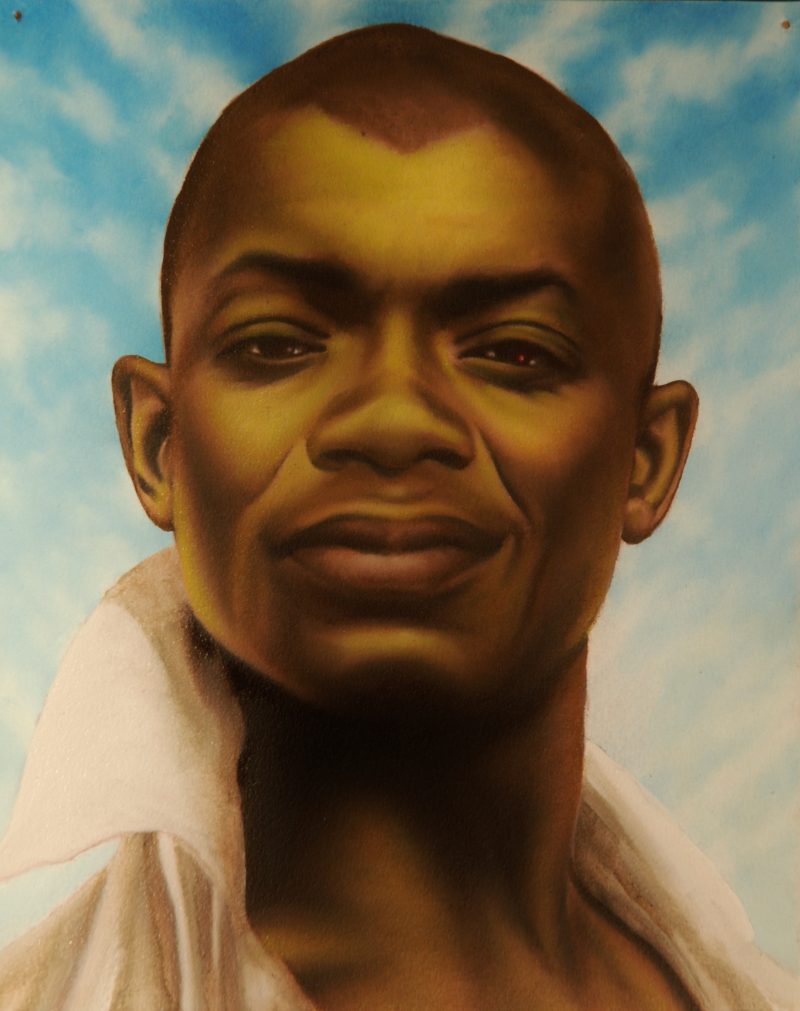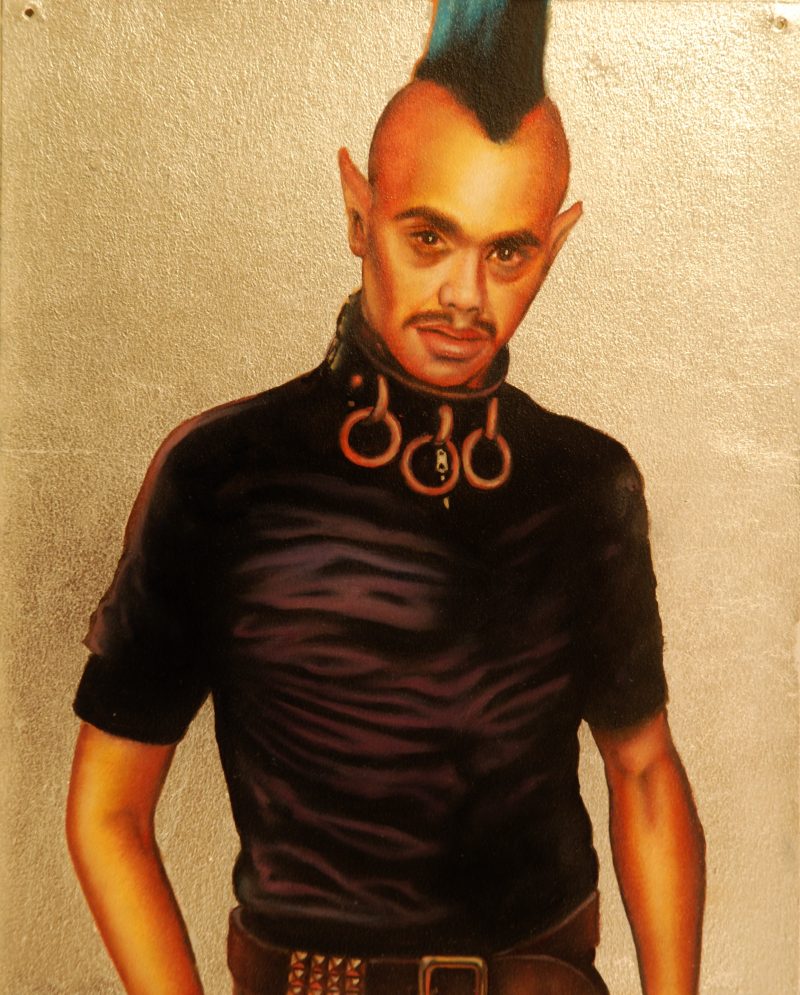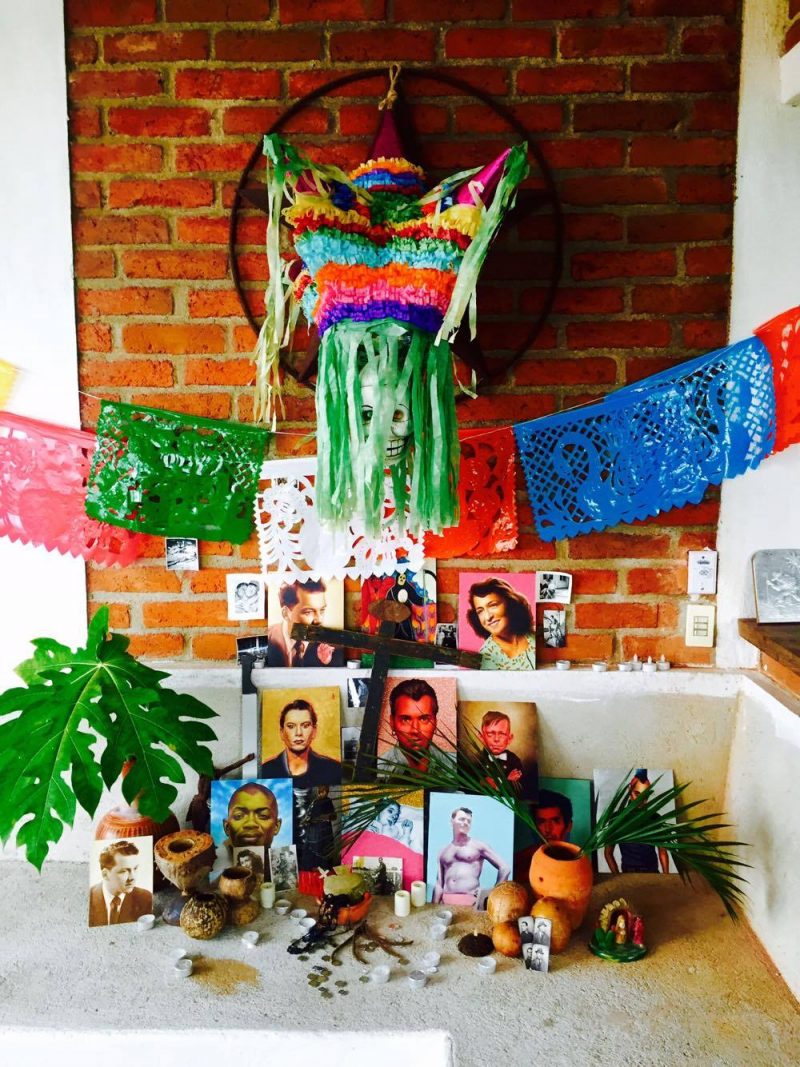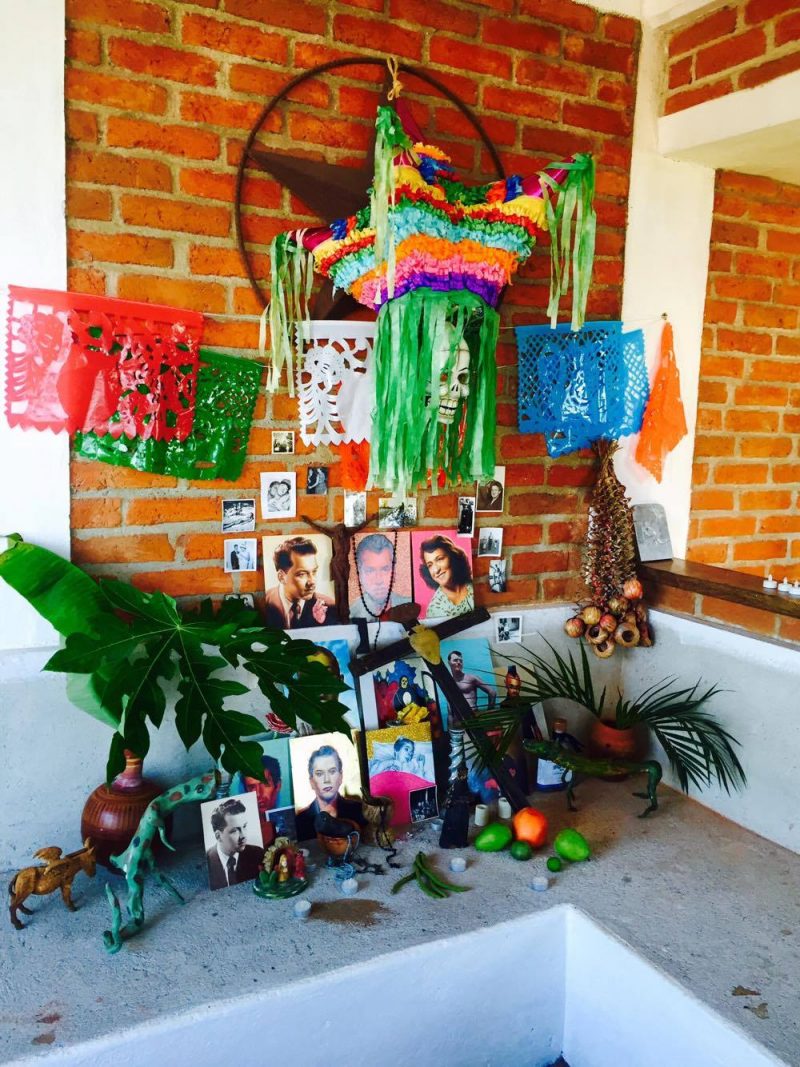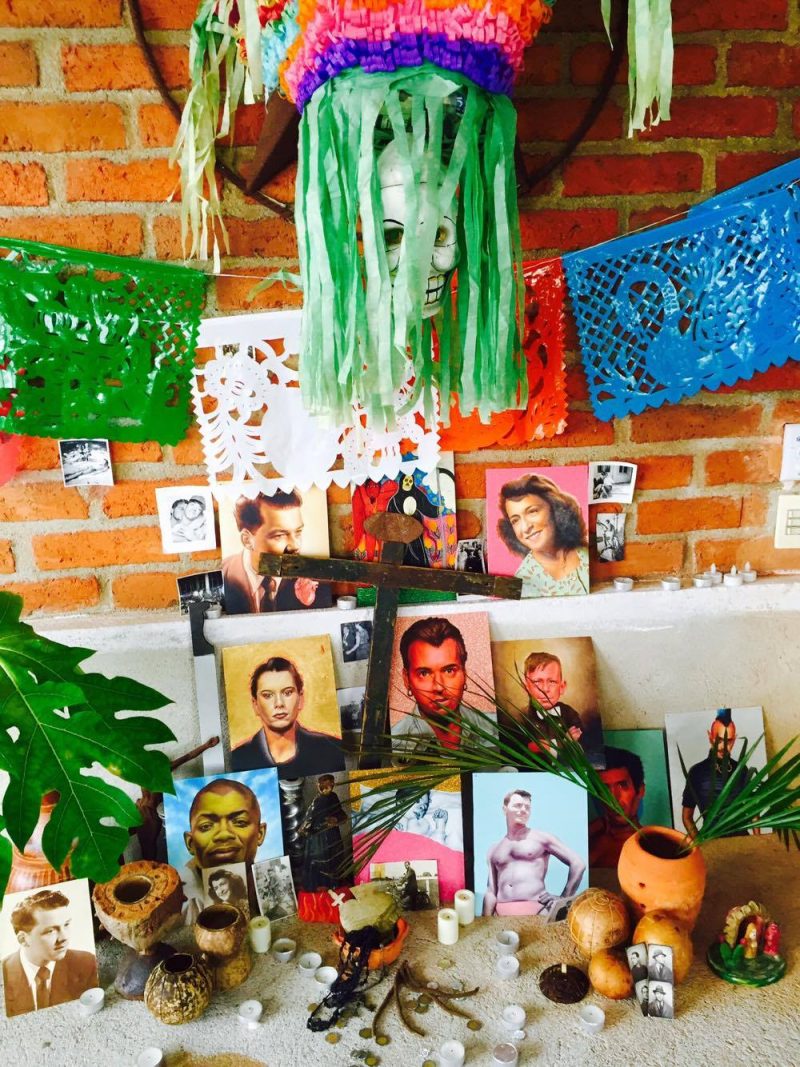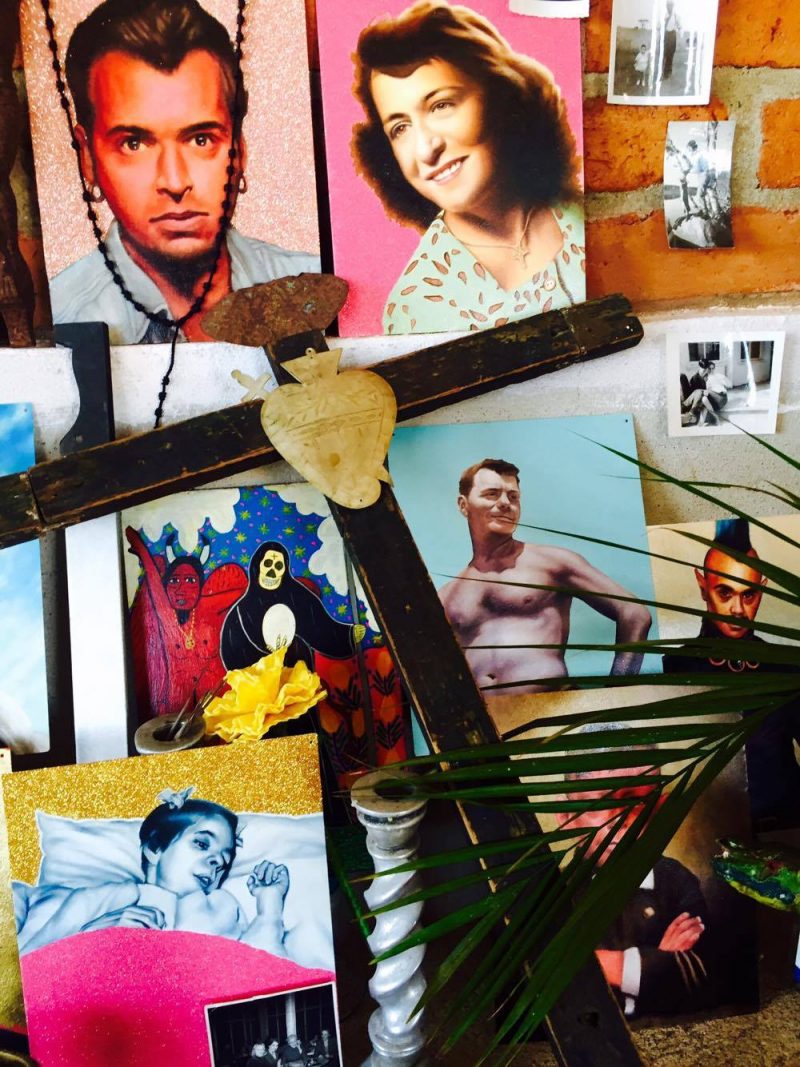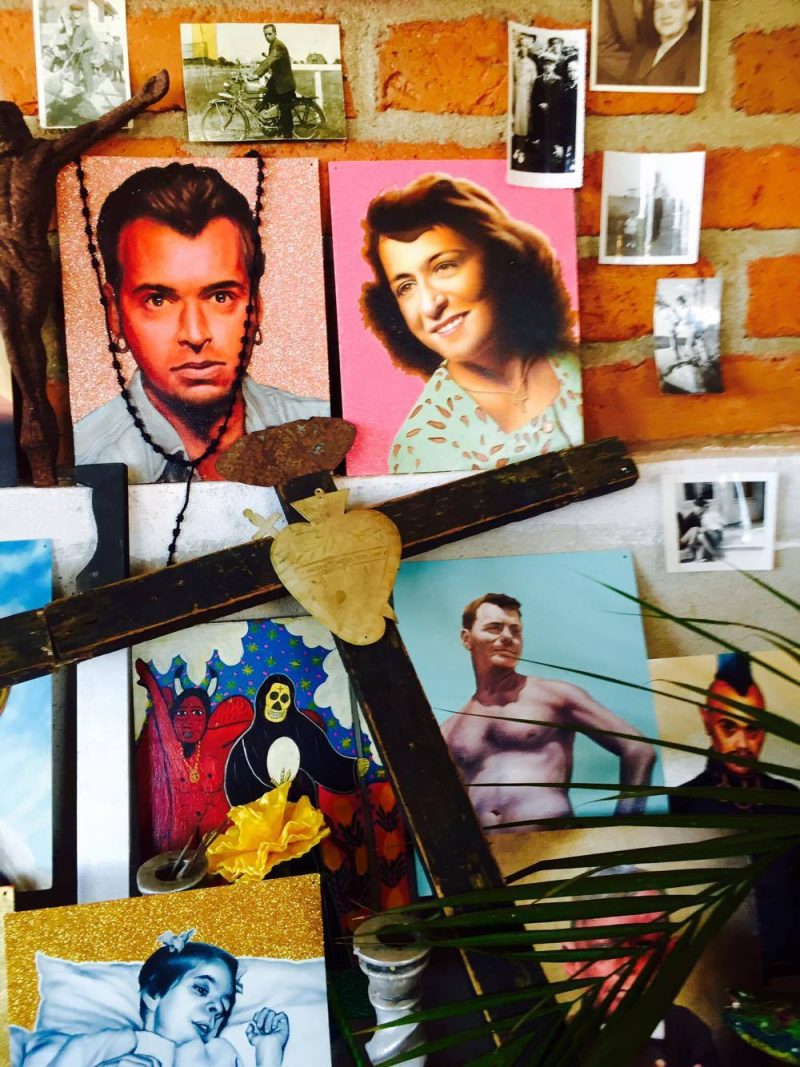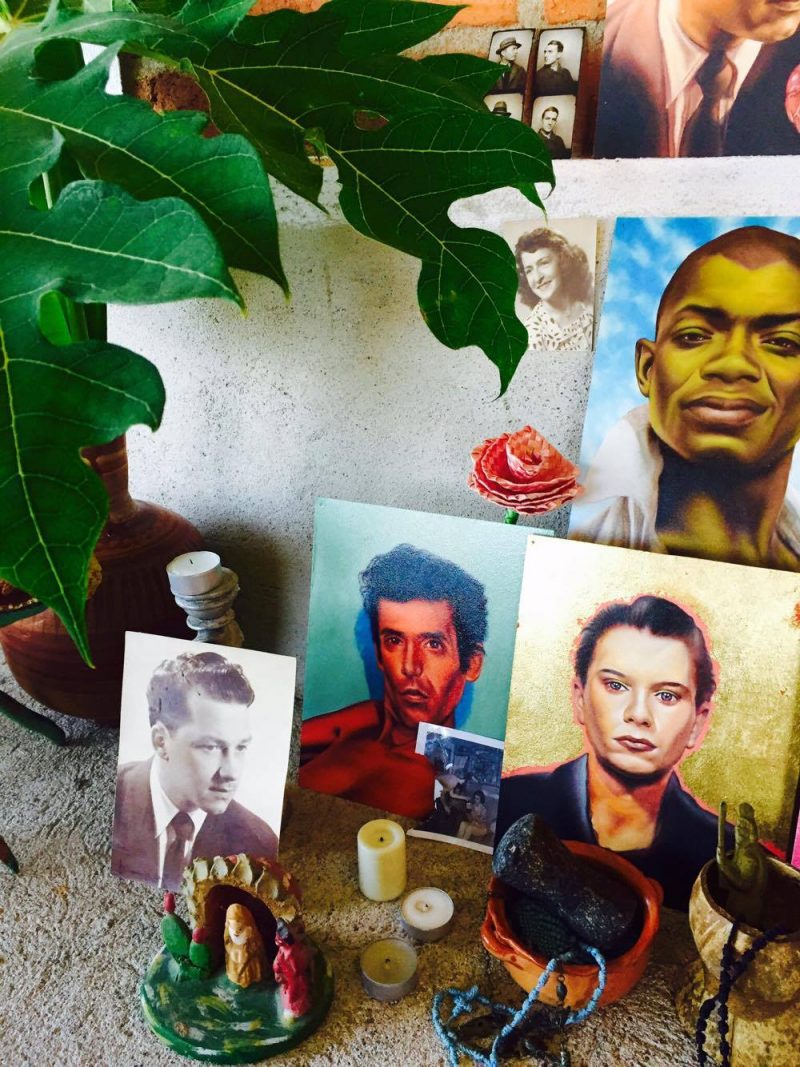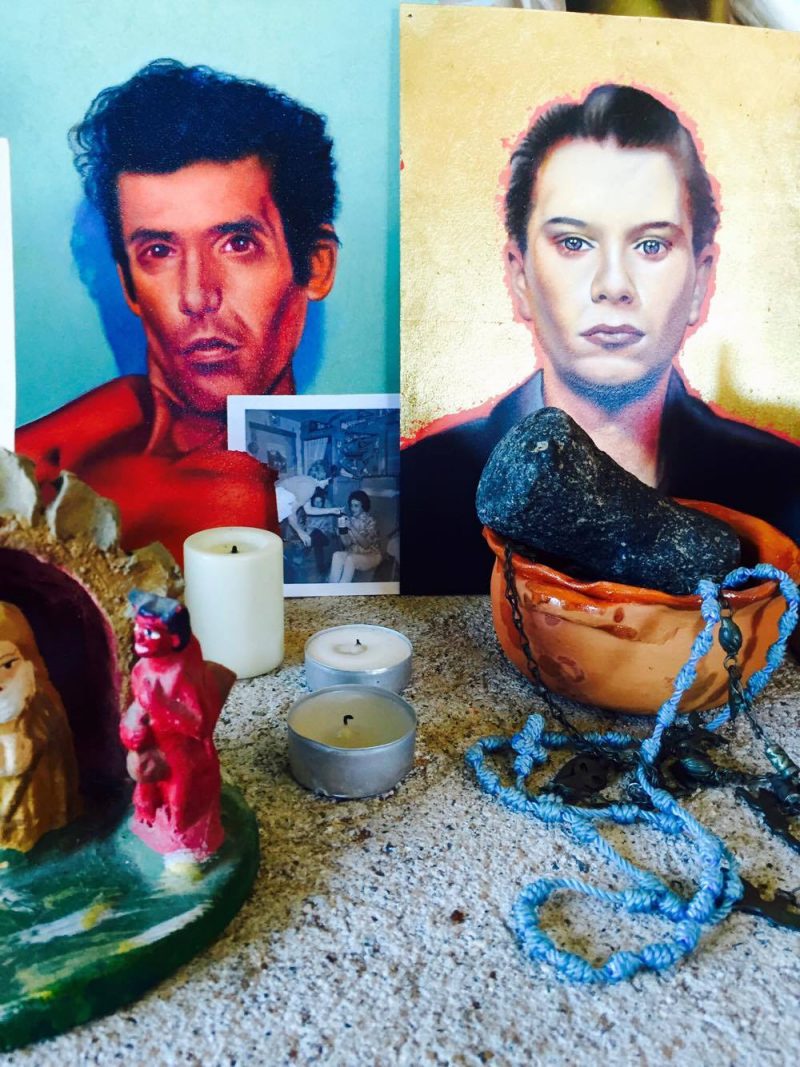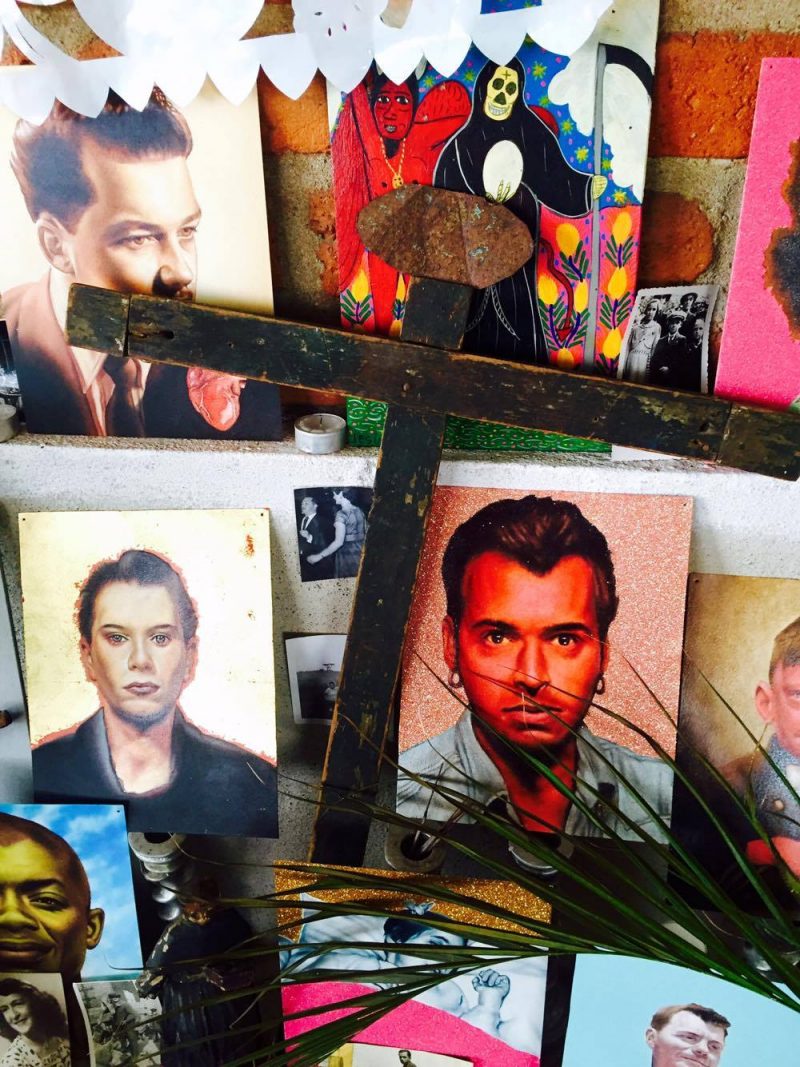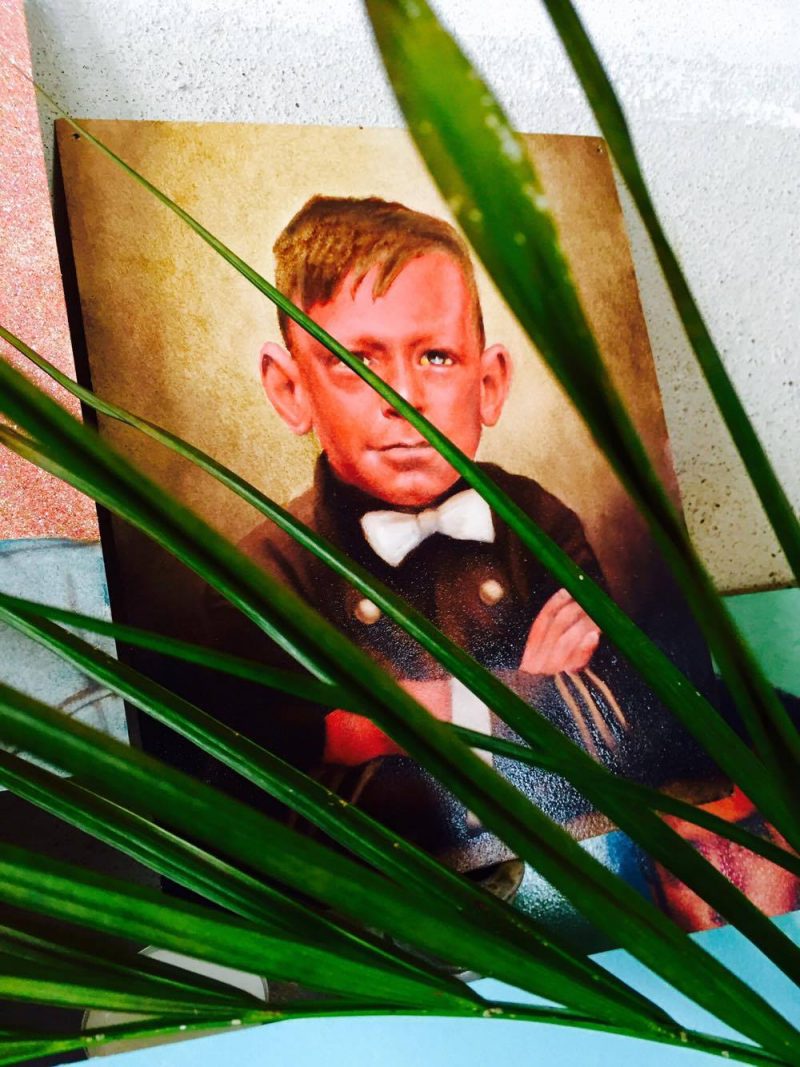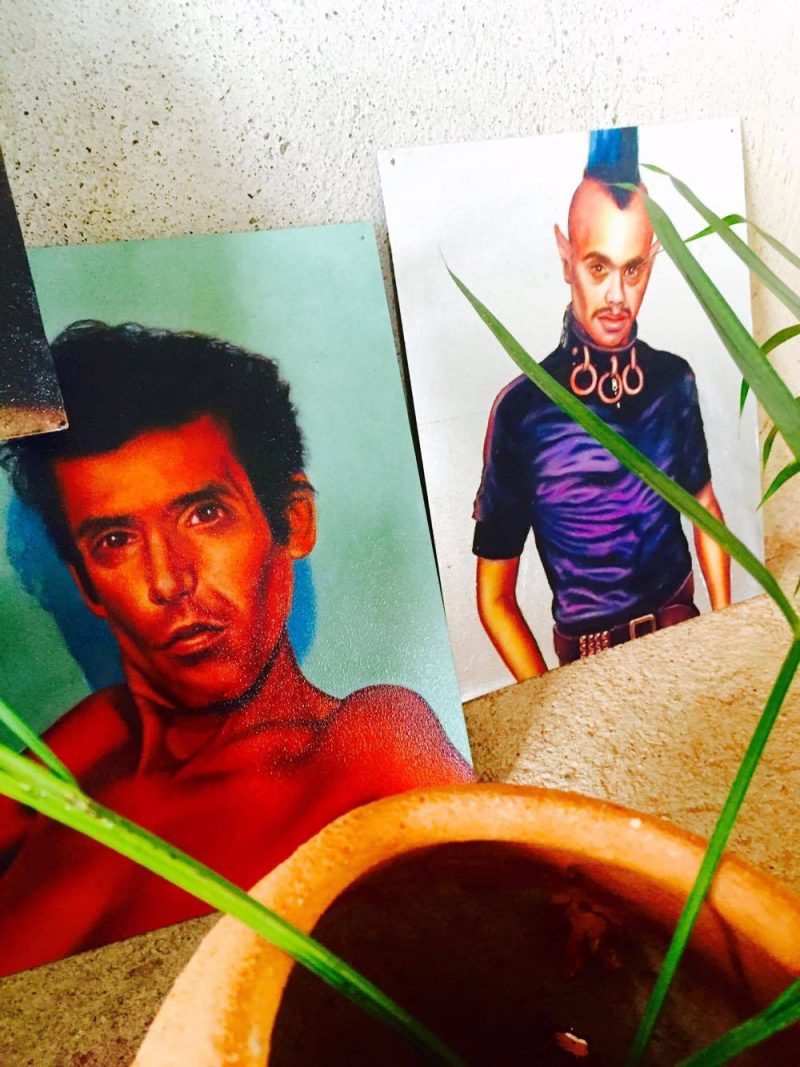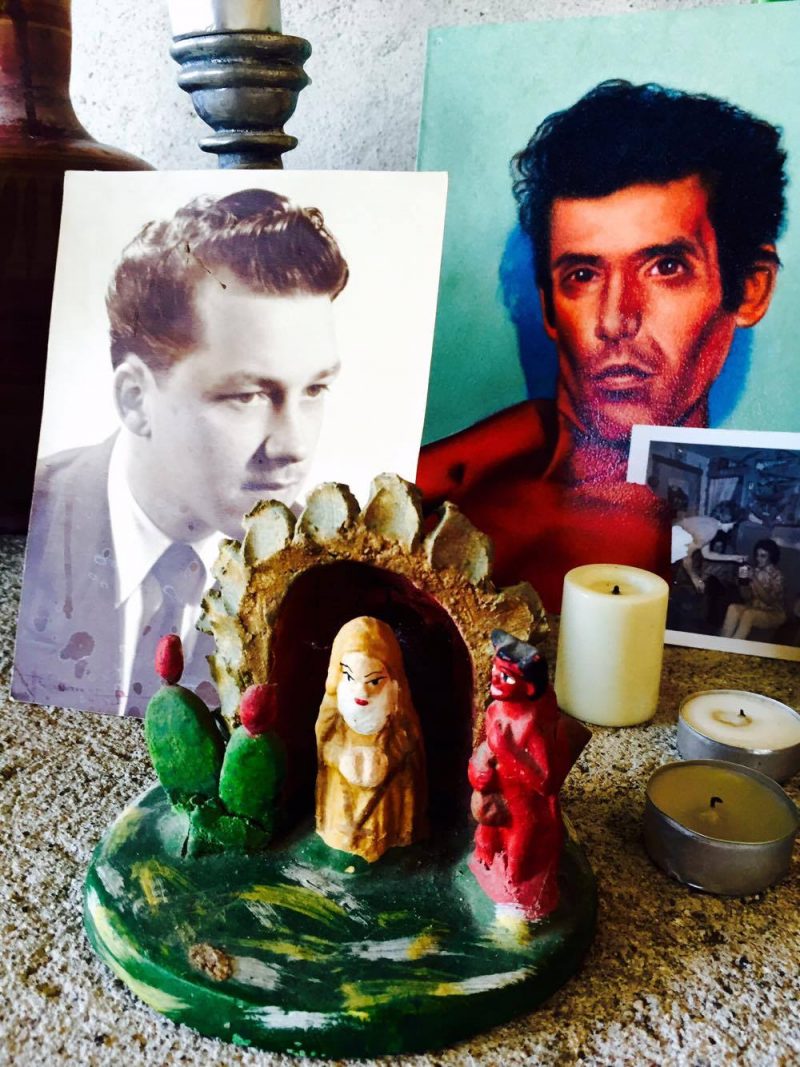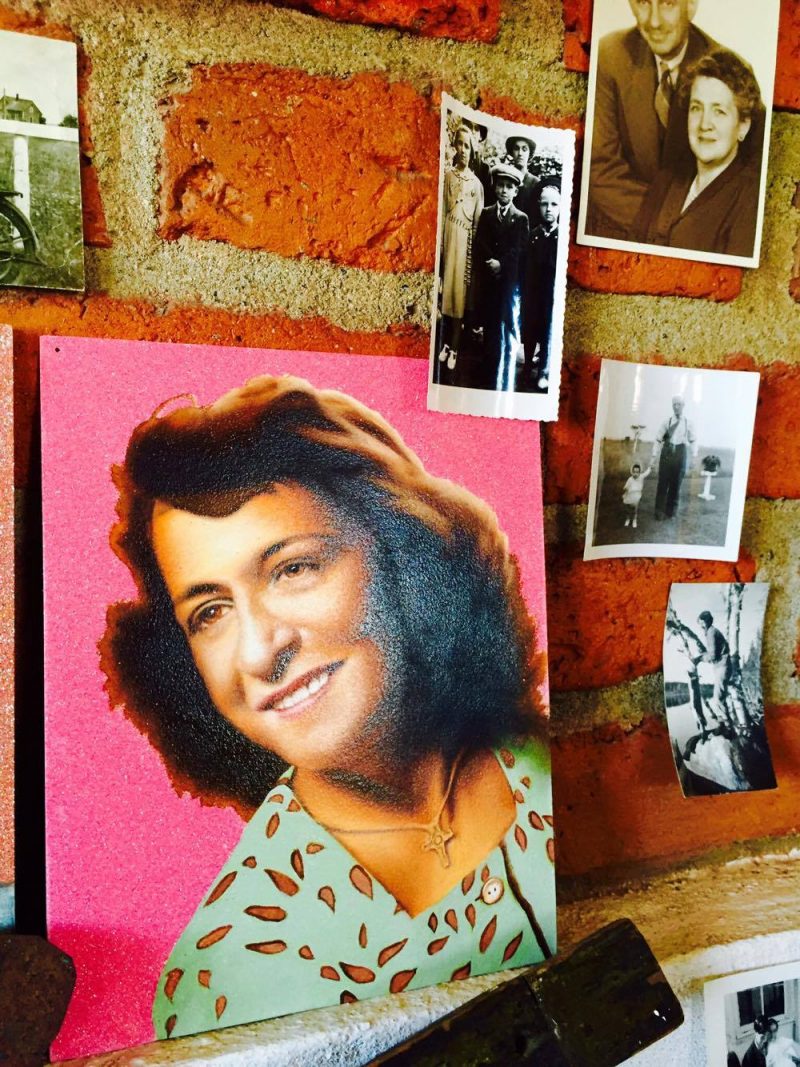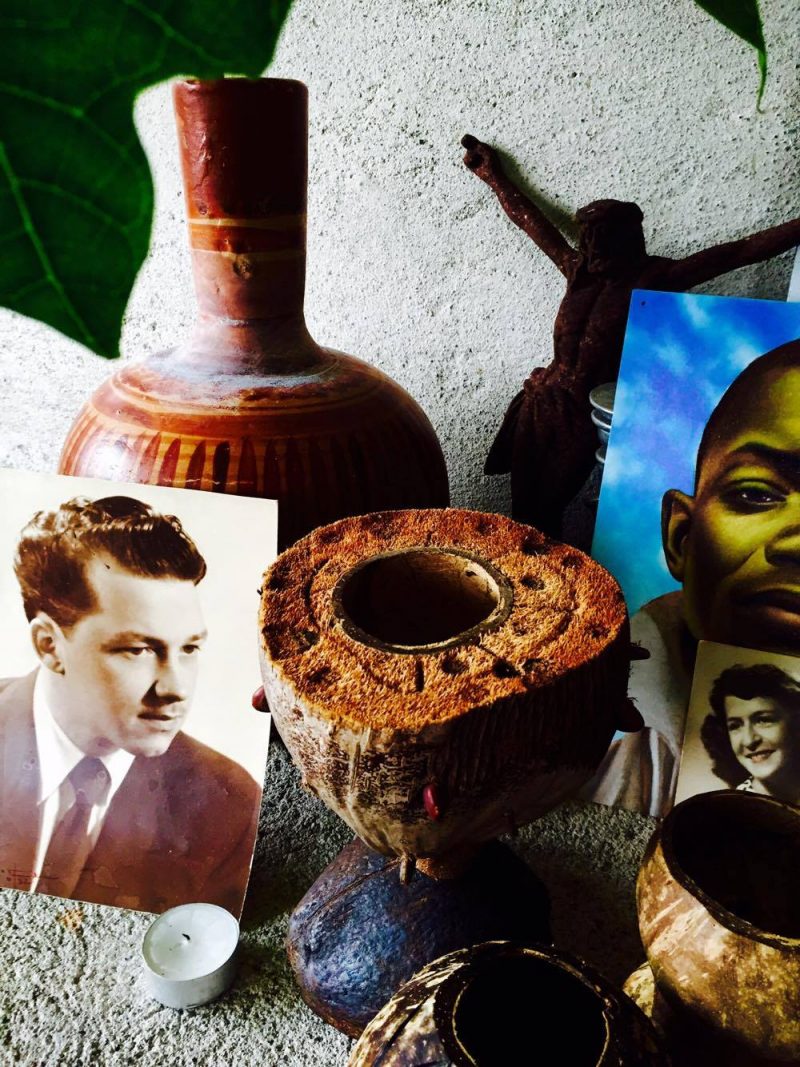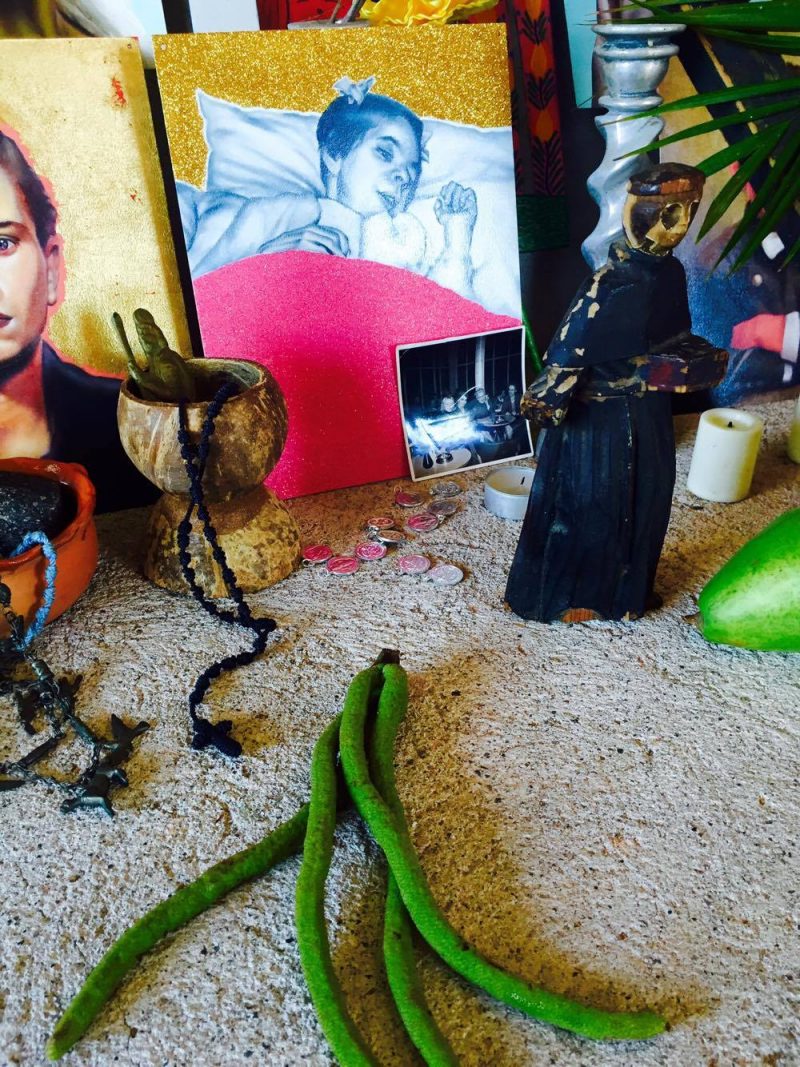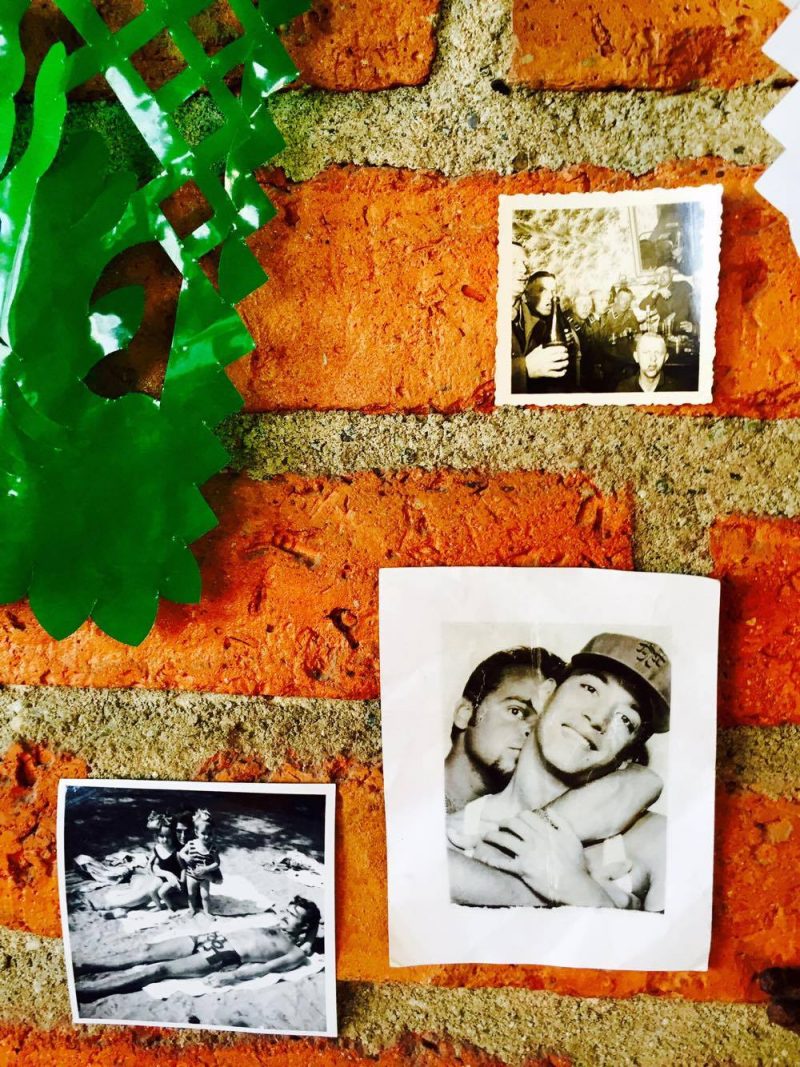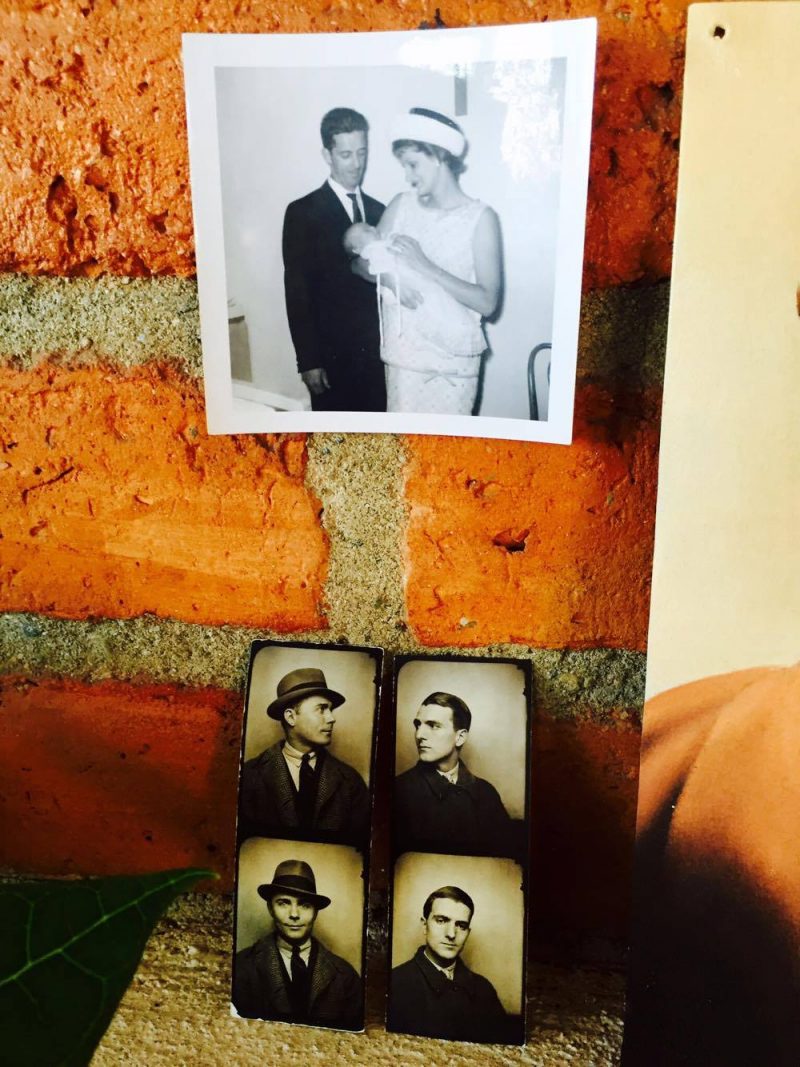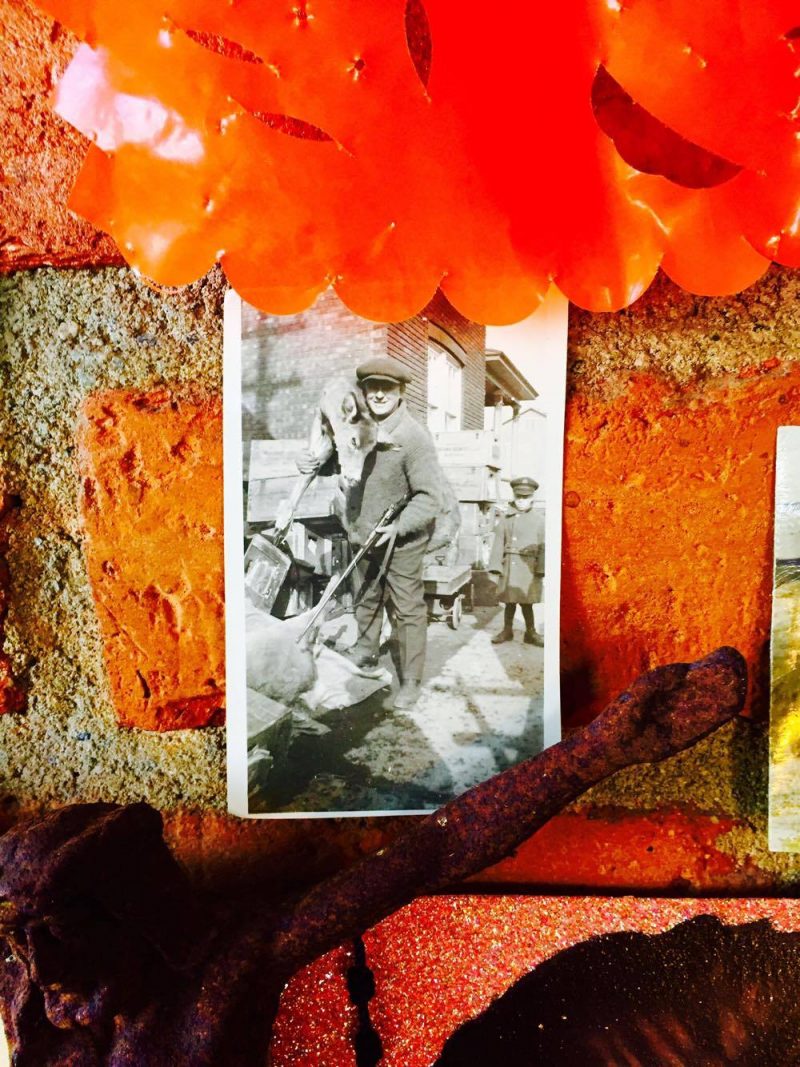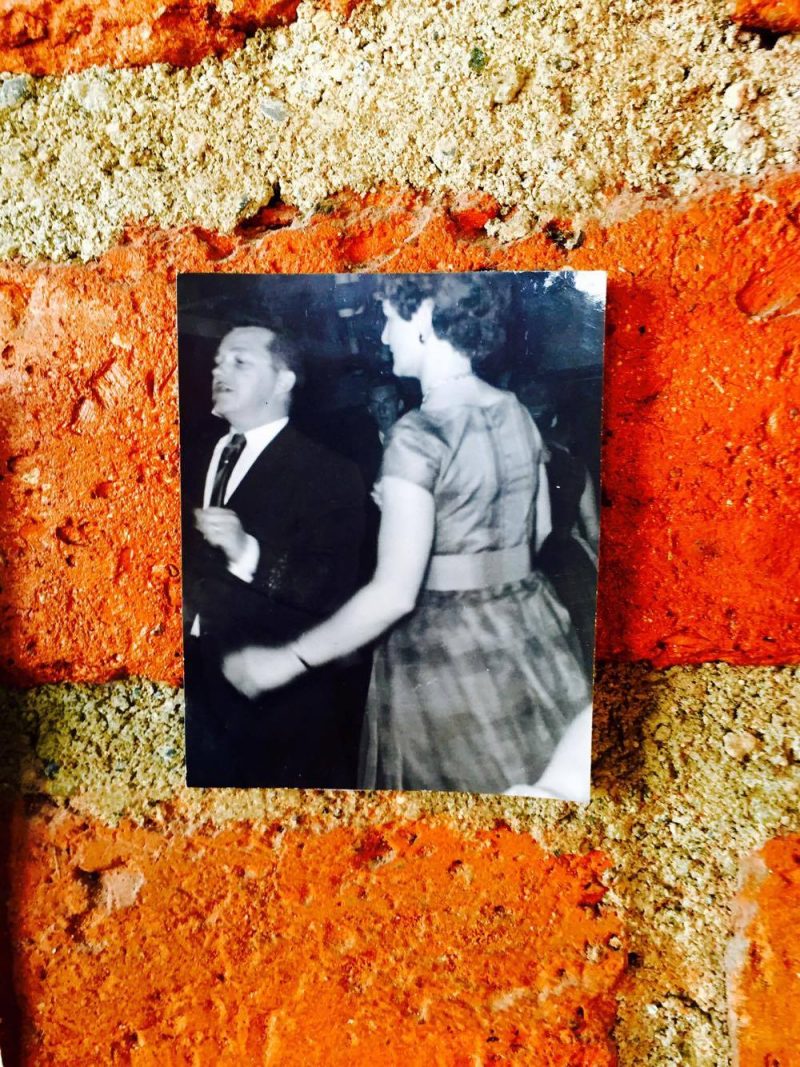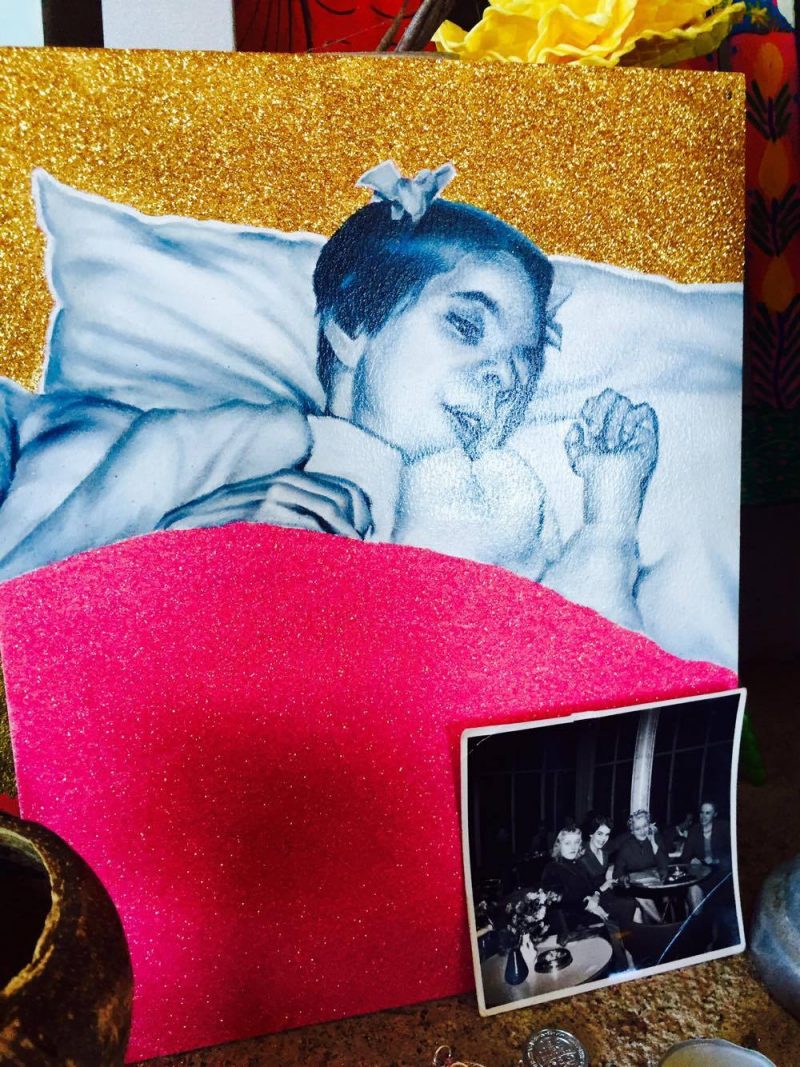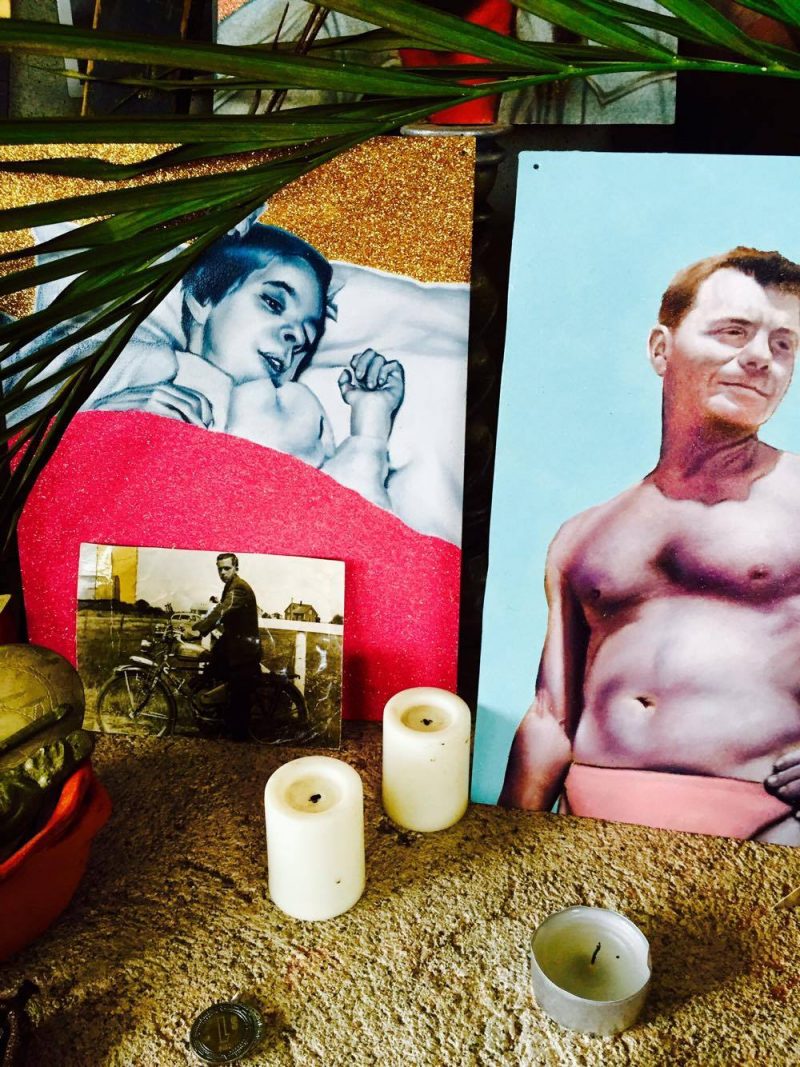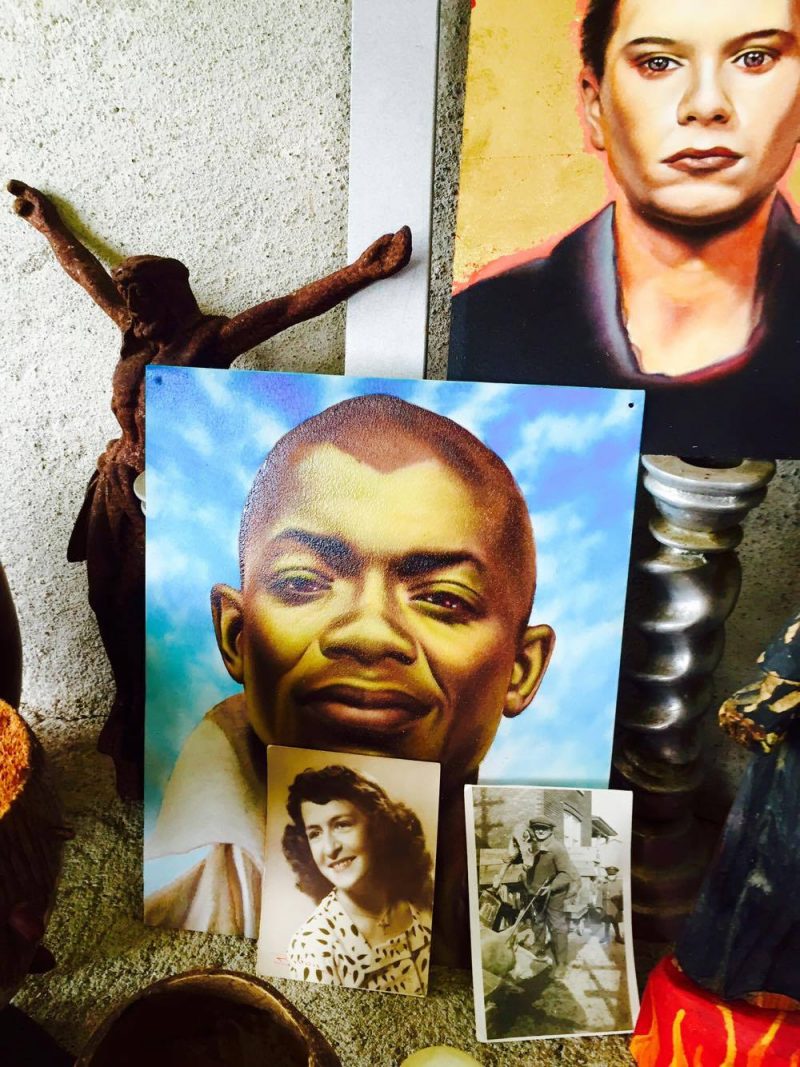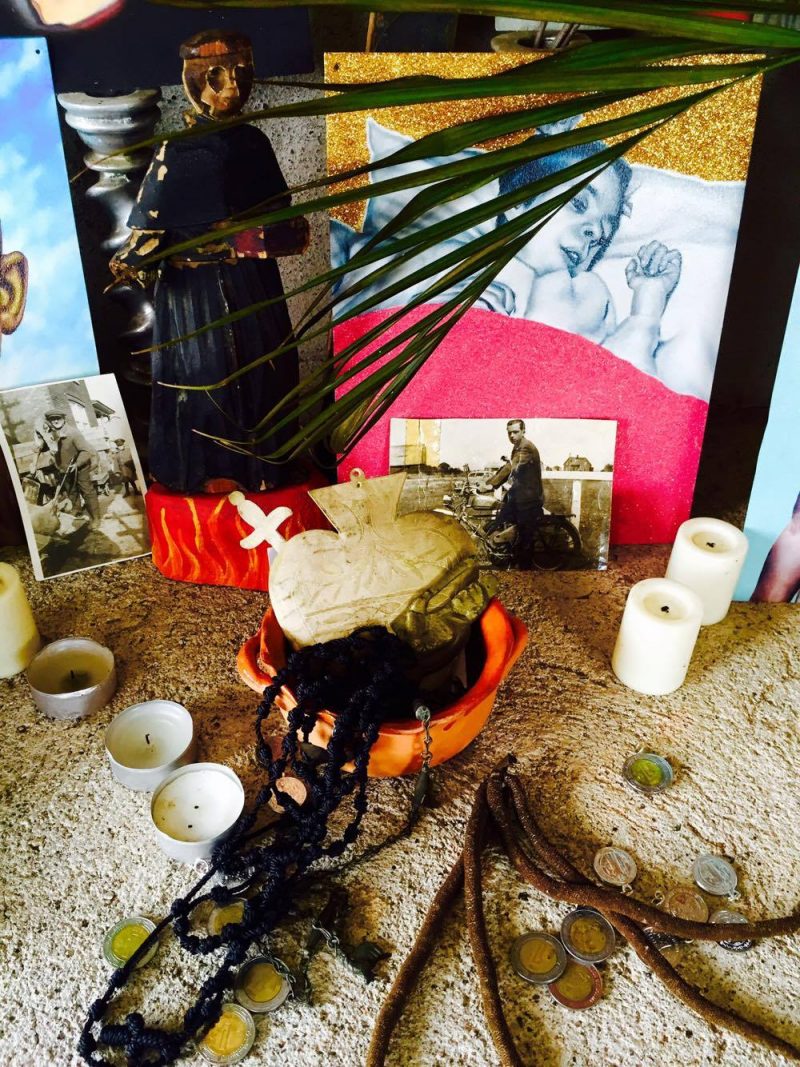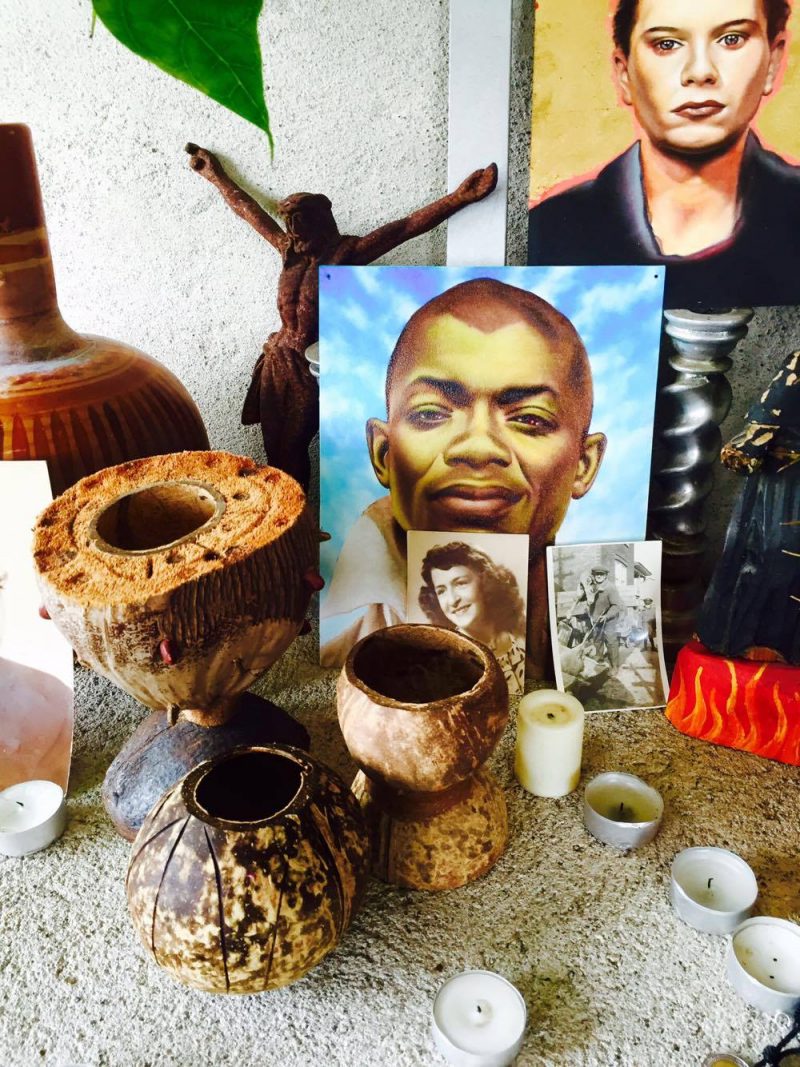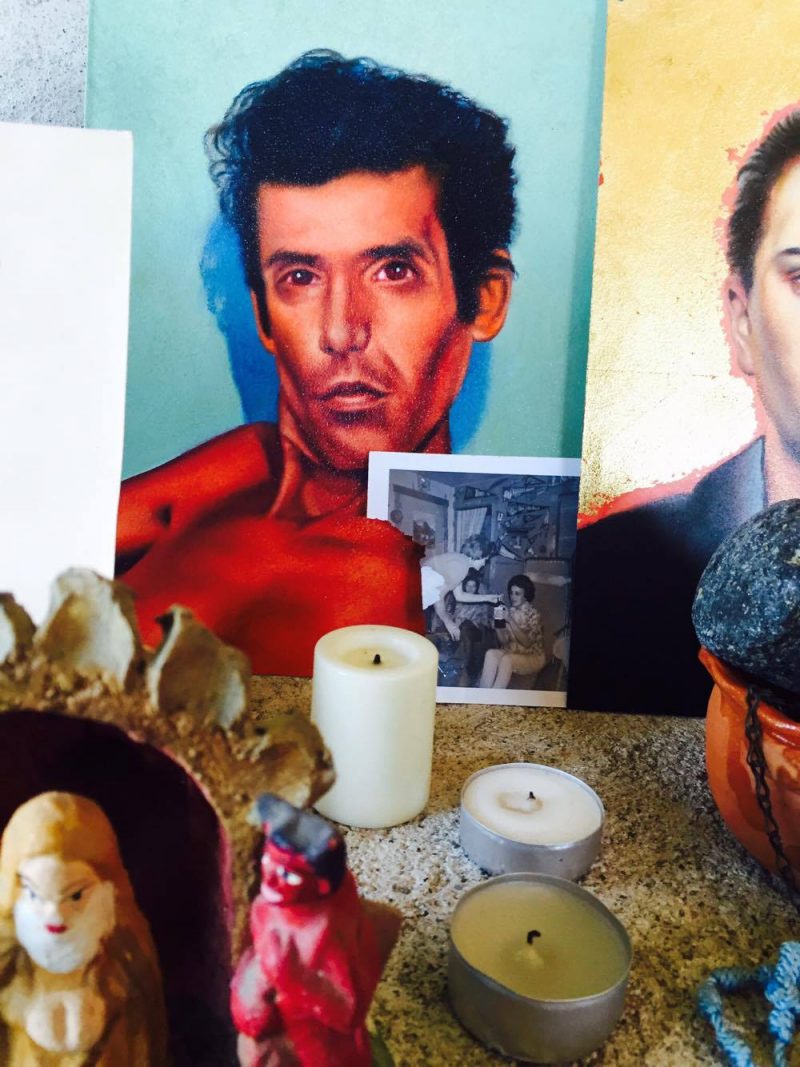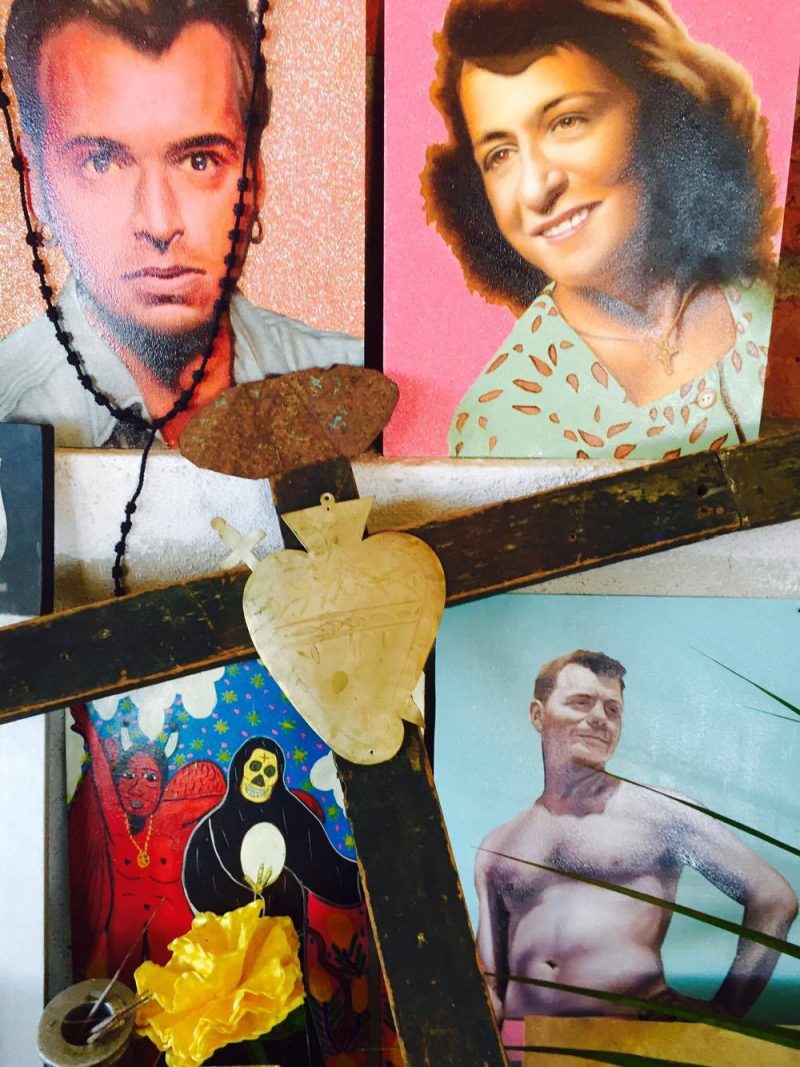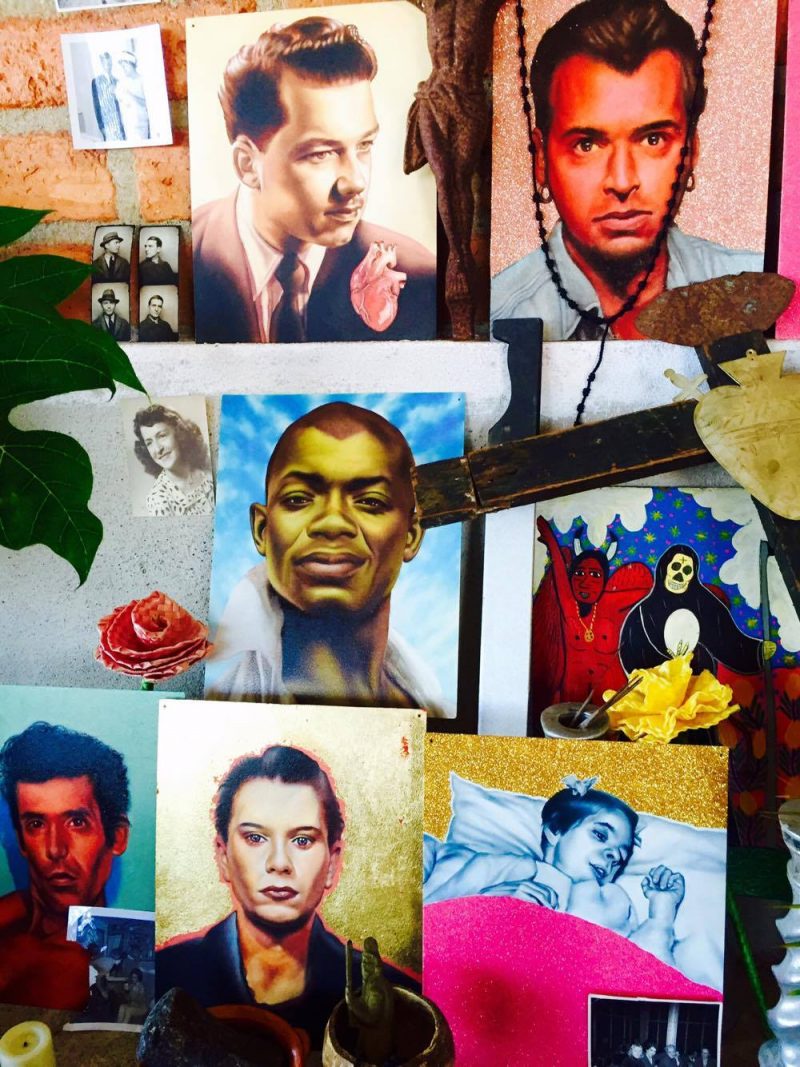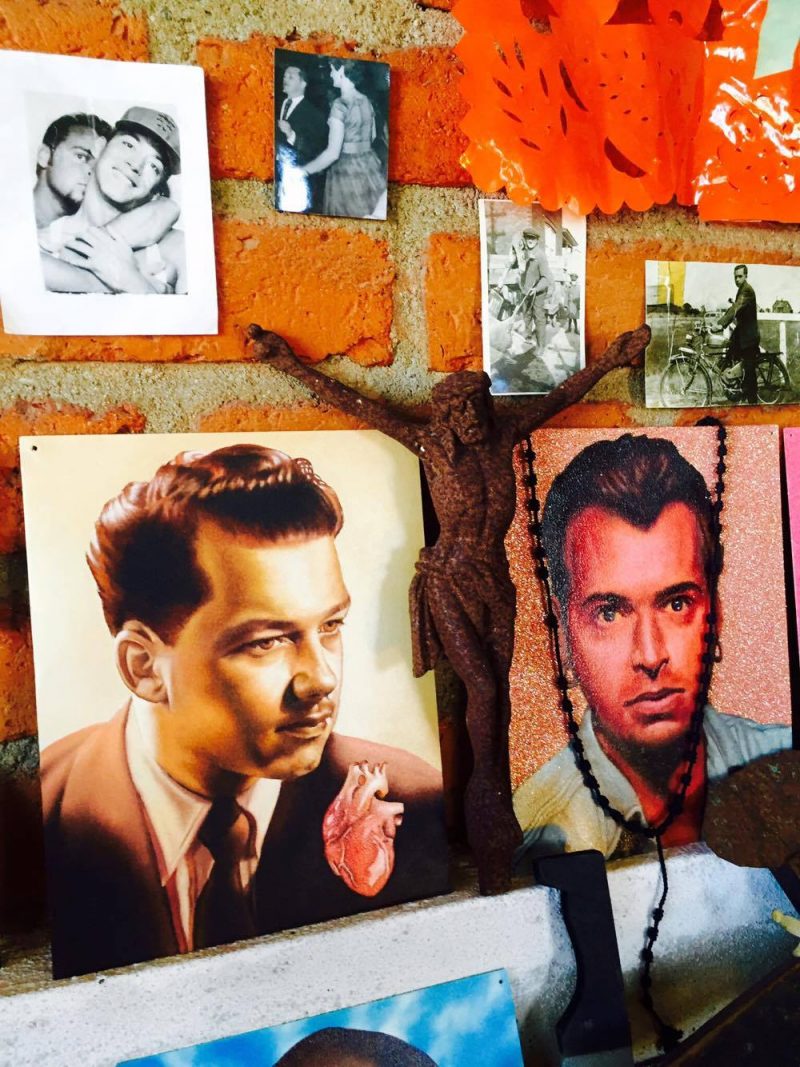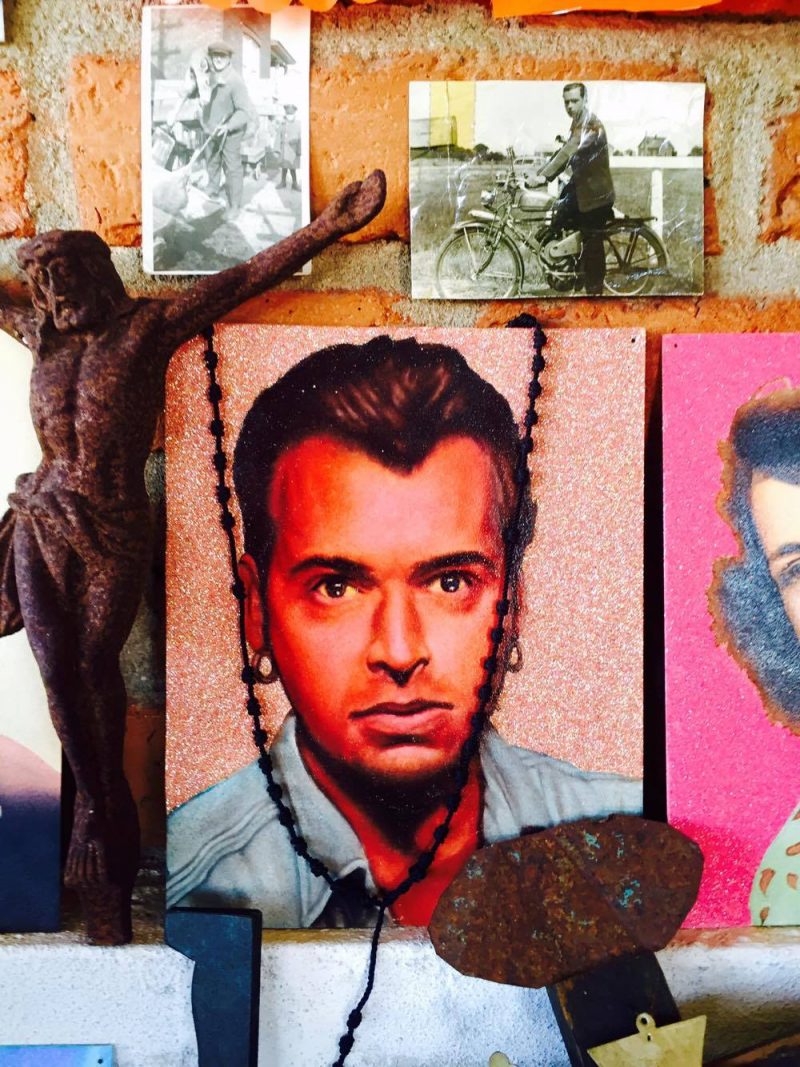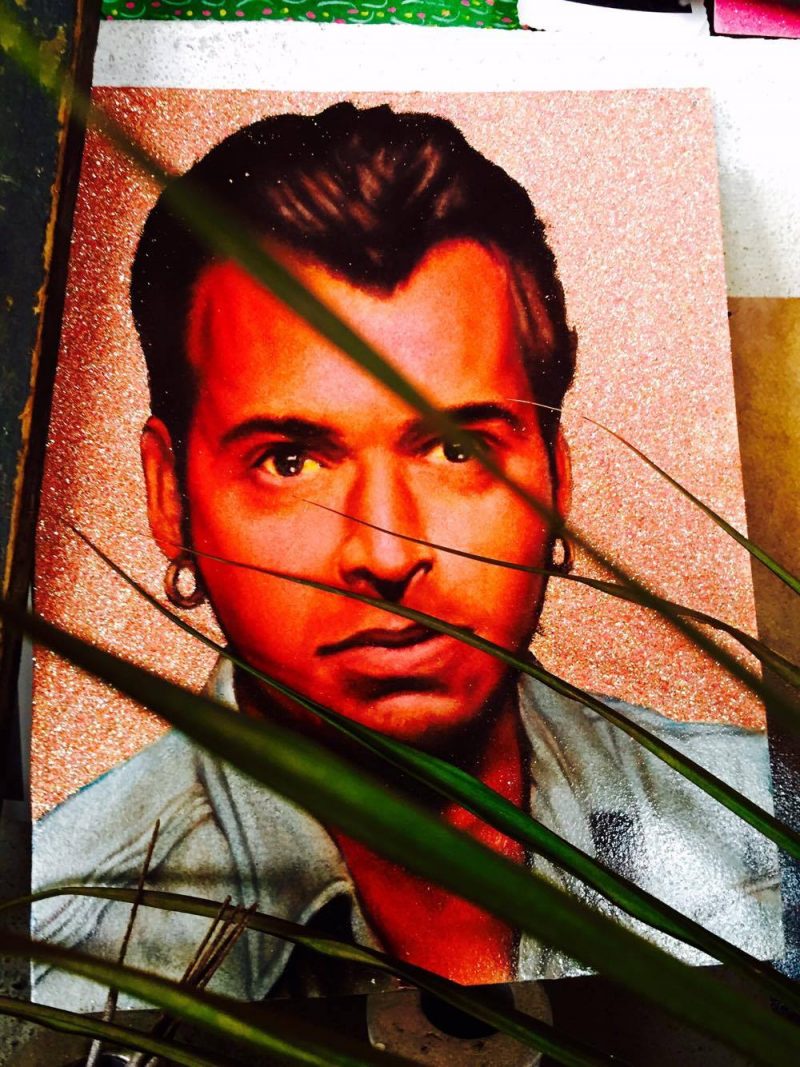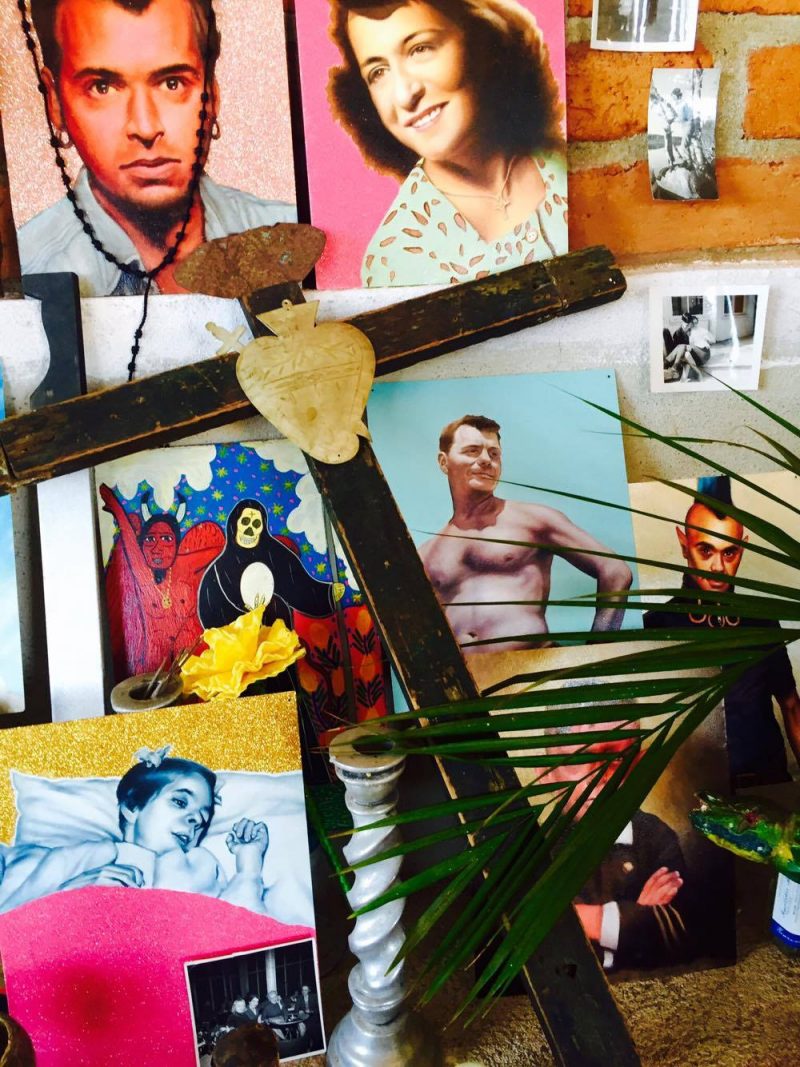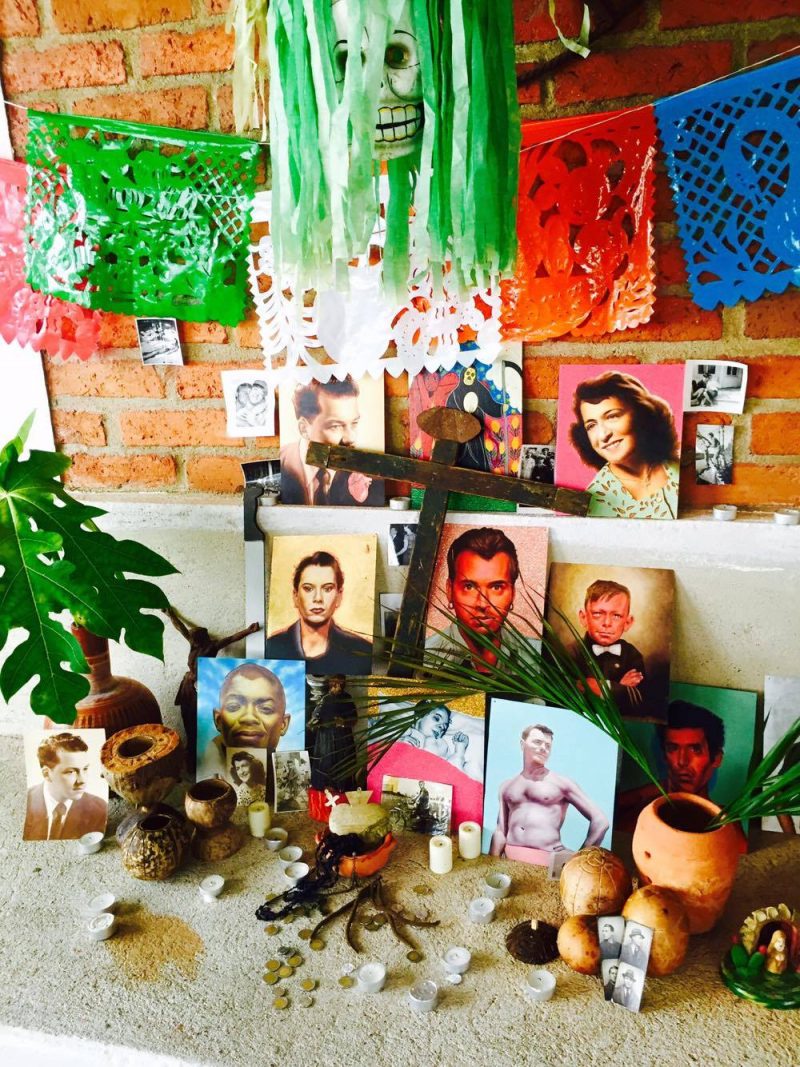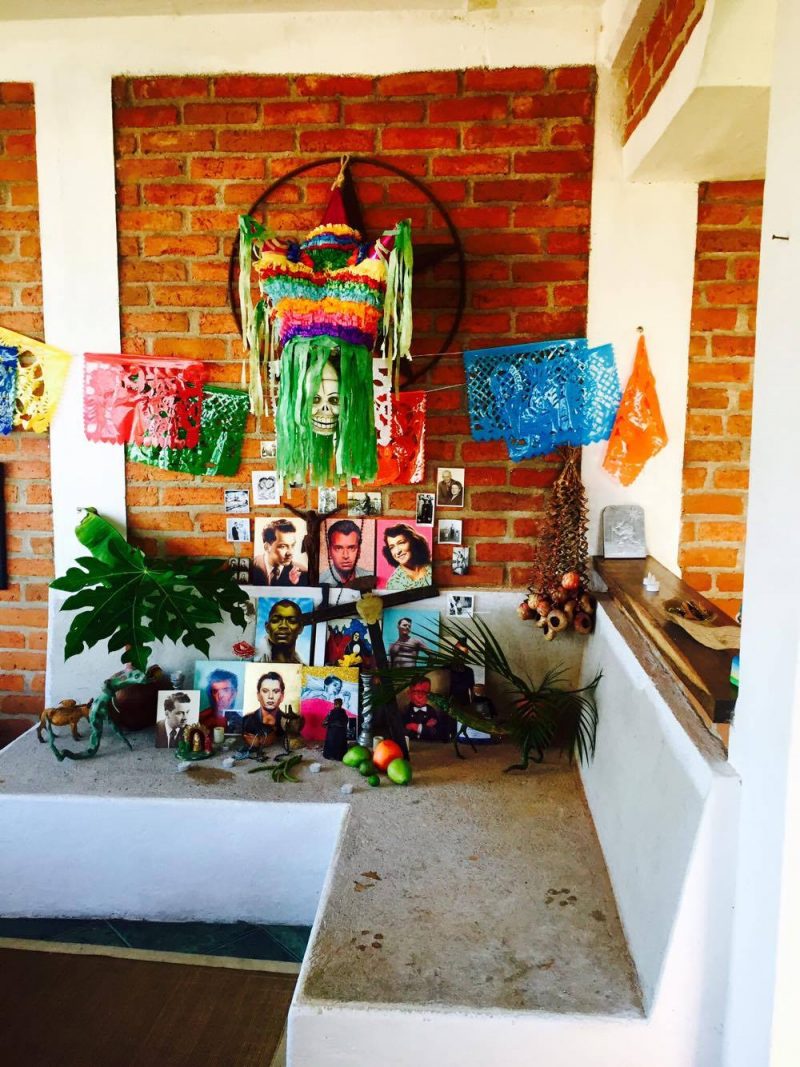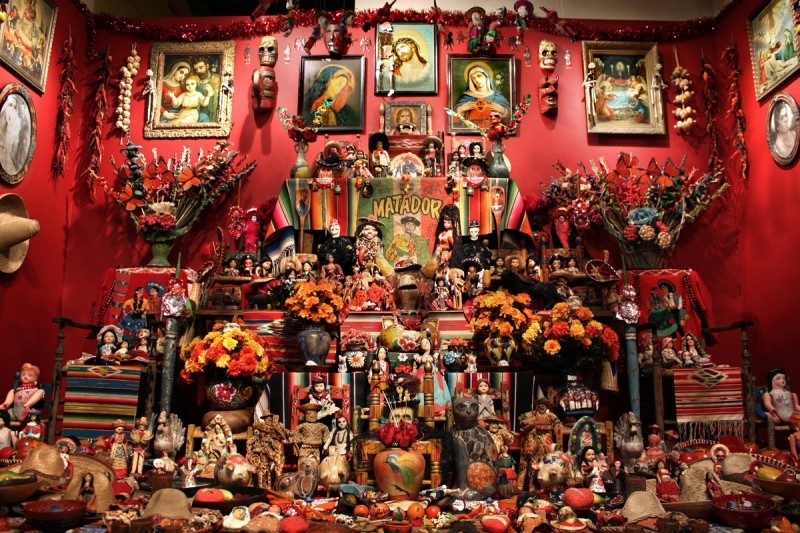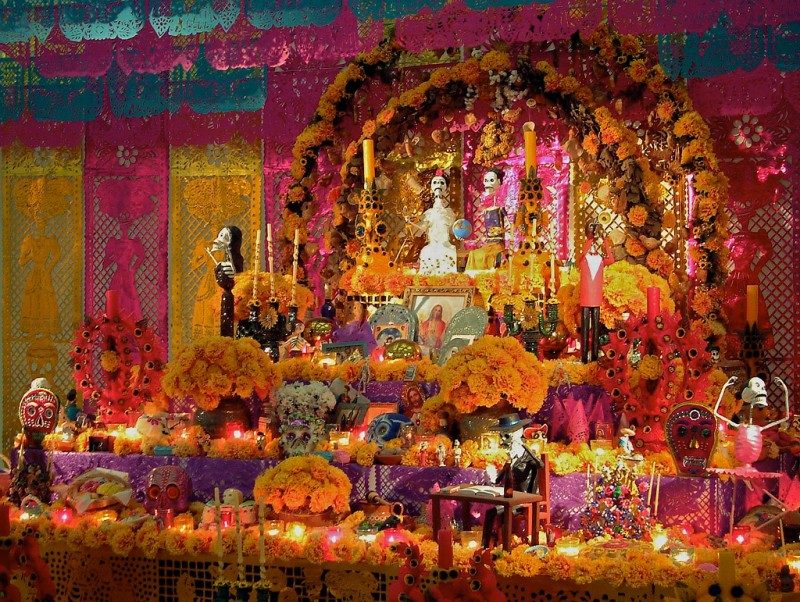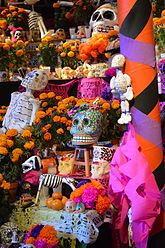The Resurrected / International Project 2016
“Raw experience tells us that there is no single, proper way to remember those that we have lost. In each instance of loss our challenge is to resist the desire to defy history, recreate the past, and bring them back. Instead, despite the rushed pace of day-to-day life, our task is to continually revive, recast, and honour our memories of them. Our task is to resurrect these memories, either in private or public, through their image, their words, and their beliefs. Born out of this commitment, Resurrected works against the grain of the traditional contemporary art formula whereby curators are expected to maintain a sense of cool academic distance to their subject matter. In stark contrast, this project is a purely instinctual curatorial gesture that bridges the gap between the personal and the public, art and life, artefact and memory.
With Resurrected, curator Guy Berube reflects back 35 years to exalt the memory of individuals that have shaped his life. The project will consist of an archive of portraits held within an impermanent, hand-constructed, and site-specific altar shrine – a sort of a soft monument for the spirit of the dead, constructed in the name of life. The portraits have been produced by Ottawa-based hyperrealist painter Peter Shmelzer, a close friend and long-time collaborator. Each is constructed as a traditional prayer plate, with the clear, striking image of the individual presented in front of a modest background that is tied together with a reserved, muted pallet. Taking on a vanitas sculptural quality, the altar shrine will be furnished with fruits and vegetables, flowers, candles, and a collection of personal ephemera. Visitors are also encouraged to bring their own offerings, so that on this very rare occasion perfect strangers, both living and dead, might have the chance meet.
The portraits are modest, honest images that contain symbolism based on each individual & their circumstances. Resurrected does not imagine these individuals as deities or ghosts: Neither the individual paintings nor the complete altar shrine should be misunderstood as attempts to immortalize them. Instead, the project demonstrates that these individuals are still apart of the world, existing in and through the memories of those who carry them. It can be said, then, that the subjects of the exhibition are simply being taken on a journey. Together, they will travel to Puerto Vallarta, Mexico, a region and a site they had never visited in the material world, where the construction and maintenance of the altar shrine is set to coincide with the national Day of the Dead holiday. Resurrected takes on the spirit of the festival by occupying that difficult, yet perfectly human grey territory between mourning and ceremony, between melancholia and gratitude”.
- Written by Adam Barbu, 2016
| Day of the Dead | |
|---|---|
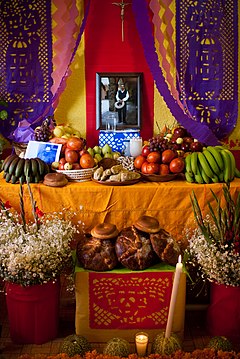
Día de Muertos altar commemorating a deceased man in Milpa Alta, México DF.
|
|
| Observed by | Mexico, and regions with large Hispanic populations |
| Type | Cultural Syncretic Christian |
| Significance | Prayer and remembrance of friends and family members who have died |
| Celebrations | Creation of altars to remember the dead, traditional day of the dead’s food |
| Begins | October 31 |
| Ends | November 2 |
| Date | October 31 |
| Next time | 31 October 2016 (2016-10-31) |
| Frequency | Annual |
| Related to | All Saint’s Day |
Day of the Dead (Spanish: Día de Muertos) is a Mexican holiday celebrated throughout Mexico, in particular the Central and South regions, and by people of Mexican ancestry living in other places, especially the United States. It is acknowledged internationally in many other cultures. The multi-day holiday focuses on gatherings of family and friends to pray for and remember friends and family members who have died, and help support their spiritual journey. In 2008 the tradition was inscribed in the Representative List of the Intangible Cultural Heritage of Humanity by UNESCO.
The holiday is sometimes called Día de los Muertos in Anglophone countries, a back-translation of its original name, Día de Muertos. It is particularly celebrated in Mexico where the day is a public holiday. Prior to Spanish colonization in the 16th century, the celebration took place at the beginning of summer. Gradually it was associated with October 31, November 1 and November 2 to coincide with the Western Christian triduum of Allhallowtide: All Saints’ Eve, All Saints’ Day, and All Souls’ Day. Traditions connected with the holiday include building private altars called ofrendas, honoring the deceased using sugar skulls, marigolds, and the favorite foods and beverages of the departed, and visiting graves with these as gifts. Visitors also leave possessions of the deceased at the graves.
Scholars trace the origins of the modern Mexican holiday to indigenous observances dating back hundreds of years and to an Aztec festival dedicated to the goddess Mictecacihuatl. The holiday has spread throughout the world, being absorbed within other deep traditions for honoring the dead. It has become a national symbol and as such is taught (for educational purposes) in the nation’s schools. Many families celebrate a traditional “All Saints’ Day” associated with the Catholic Church.
Originally, the Day of the Dead as such was not celebrated in northern Mexico, where it was unknown until the 20th century because its indigenous people had different traditions. The people and the church rejected it as a day related to syncretizing pagan elements with Catholic Christianity. They held the traditional ‘All Saints’ Day‘ in the same way as other Christians in the world. There was limited Mesoamerican influence in this region, and relatively few indigenous inhabitants from the regions of Southern Mexico, where the holiday was celebrated. In the early 21st century in northern Mexico, Día de Muertos is observed because the Mexican government made it a national holiday based on educational policies from the 1960s; it has introduced this holiday as a unifying national tradition based on indigenous traditions.
The Mexican Day of the Dead celebration is similar to other culture’s observances of a time to honor the dead. The Spanish tradition included festivals and parades, as well as gatherings of families at cemeteries to pray for their deceased loved ones at the end of the day.
Observance in Mexico
Origins
Woman lighting copal incense at the cemetery during the “Alumbrada” vigil in San Andrés Mixquic
The Day of the Dead celebrations in Mexico developed from ancient traditions among its pre-Columbian cultures. Rituals celebrating the deaths of ancestors had been observed by these civilizations perhaps for as long as 2,500–3,000 years. The festival that developed into the modern Day of the Dead fell in the ninth month of the Aztec calendar, about the beginning of August, and was celebrated for an entire month. The festivities were dedicated to the goddess known as the “Lady of the Dead”, corresponding to the modern La Calavera Catrina.
By the late 20th century in most regions of Mexico, practices had developed to honor dead children and infants on November 1, and to honor deceased adults on November 2. November 1 is generally referred to as Día de los Inocentes (“Day of the Innocents”) but also as Día de los Angelitos (“Day of the Little Angels”); November 2 is referred to as Día de los Muertos or Día de los Difuntos (“Day of the Dead”).
Beliefs
Frances Ann Day summarizes the three-day celebration, the Day of the Dead:
| “ | On October 31, All Hallows Eve, the children make a children’s altar to invite the angelitos (spirits of dead children) to come back for a visit. November 1 is All Saints Day, and the adult spirits will come to visit. November 2 is All Souls Day, when families go to the cemetery to decorate the graves and tombs of their relatives. The three-day fiesta is filled with marigolds, the flowers of the dead; muertos (the bread of the dead); sugar skulls; cardboard skeletons; tissue paper decorations; fruit and nuts; incense, and other traditional foods and decorations. | ” |
| — Frances Ann Day, Latina and Latino Voices in Literature | ||
People go to cemeteries to be with the souls of the departed and build private altars containing the favorite foods and beverages, as well as photos and memorabilia, of the departed. The intent is to encourage visits by the souls, so the souls will hear the prayers and the comments of the living directed to them. Celebrations can take a humorous tone, as celebrants remember funny events and anecdotes about the departed.
Plans for the day are made throughout the year, including gathering the goods to be offered to the dead. During the three-day period families usually clean and decorate graves; most visit the cemeteries where their loved ones are buried and decorate their graves with ofrendas (altars), which often include orange Mexican marigolds (Tagetes erecta) called cempasúchil (originally named cempoaxochitl, Nāhuatl for “twenty flowers”). In modern Mexico the marigold is sometimes called Flor de Muerto (Flower of Dead). These flowers are thought to attract souls of the dead to the offerings.
Toys are brought for dead children (los angelitos, or “the little angels”), and bottles of tequila, mezcal or pulque or jars of atole for adults. Families will also offer trinkets or the deceased’s favorite candies on the grave. Some families have ofrendas in homes, usually with foods such as candied pumpkin, pan de muerto (“bread of dead”), and sugar skulls; and beverages such as atole. The ofrendas are left out in the homes as a welcoming gesture for the deceased. Some people believe the spirits of the dead eat the “spiritual essence” of the ofrendas food, so though the celebrators eat the food after the festivities, they believe it lacks nutritional value. Pillows and blankets are left out so the deceased can rest after their long journey. In some parts of Mexico, such as the towns of Mixquic, Pátzcuaro and Janitzio, people spend all night beside the graves of their relatives. In many places people have picnics at the grave site, as well.
Families tidying and decorating graves at a cemetery in Almoloya del Río in the State of Mexico
Some families build altars or small shrines in their homes; these sometimes feature a Christian cross, statues or pictures of the Blessed Virgin Mary, pictures of deceased relatives and other persons, scores of candles, and an ofrenda. Traditionally, families spend some time around the altar, praying and telling anecdotes about the deceased. In some locations, celebrants wear shells on their clothing, so when they dance, the noise will wake up the dead; some will also dress up as the deceased.
Public schools at all levels build altars with ofrendas, usually omitting the religious symbols. Government offices usually have at least a small altar, as this holiday is seen as important to the Mexican heritage.
Those with a distinctive talent for writing sometimes create short poems, called calaveras (skulls), mocking epitaphs of friends, describing interesting habits and attitudes or funny anecdotes. This custom originated in the 18th or 19th century, after a newspaper published a poem narrating a dream of a cemetery in the future, “and all of us were dead”, proceeding to read the tombstones. Newspapers dedicate calaveras to public figures, with cartoons of skeletons in the style of the famous calaveras of José Guadalupe Posada, a Mexican illustrator. Theatrical presentations of Don Juan Tenorio by José Zorrilla (1817–1893) are also traditional on this day.
Modern representations of Catrina
José Guadalupe Posada created a famous print of a figure he called La Calavera Catrina (“The Elegant Skull”) as a parody of a Mexican upper-class female. Posada’s striking image of a costumed female with a skeleton face has become associated with the Day of the Dead, and Catrina figures often are a prominent part of modern Day of the Dead observances.
A common symbol of the holiday is the skull (in Spanish calavera), which celebrants represent in masks, called calacas (colloquial term for skeleton), and foods such as sugar or chocolate skulls, which are inscribed with the name of the recipient on the forehead. Sugar skulls can be given as gifts to both the living and the dead. Other holiday foods include pan de muerto, a sweet egg bread made in various shapes from plain rounds to skulls and rabbits, often decorated with white frosting to look like twisted bones.
Part of the “megaofrenda” at UNAM for Day of the Dead
The traditions and activities that take place in celebration of the Day of the Dead are not universal, often varying from town to town. For example, in the town of Pátzcuaro on the Lago de Pátzcuaro in Michoacán, the tradition is very different if the deceased is a child rather than an adult. On November 1 of the year after a child’s death, the godparents set a table in the parents’ home with sweets, fruits, pan de muerto, a cross, a rosary (used to ask the Virgin Mary to pray for them) and candles. This is meant to celebrate the child’s life, in respect and appreciation for the parents. There is also dancing with colorful costumes, often with skull-shaped masks and devil masks in the plaza or garden of the town. At midnight on November 2, the people light candles and ride winged boats called mariposas (butterflies) to Janitzio, an island in the middle of the lake where there is a cemetery, to honor and celebrate the lives of the dead there.
In contrast, the town of Ocotepec, north of Cuernavaca in the State of Morelos, opens its doors to visitors in exchange for veladoras (small wax candles) to show respect for the recently deceased. In return the visitors receive tamales and atole. This is done only by the owners of the house where someone in the household has died in the previous year. Many people of the surrounding areas arrive early to eat for free and enjoy the elaborate altars set up to receive the visitors.
Sculpture with skeletons made for Day of the Dead at the Museo de Arte Popular, Mexico City
In some parts of the country (especially the cities, where in recent years other customs have been displaced) children in costumes roam the streets, knocking on people’s doors for a calaverita, a small gift of candies or money; they also ask passersby for it. This relatively recent custom is similar to that of Halloween’s trick-or-treating in the United States.
Some people believe possessing Day of the Dead items can bring good luck. Many people get tattoos or have dolls of the dead to carry with them. They also clean their houses and prepare the favorite dishes of their deceased loved ones to place upon their altar or ofrenda.
